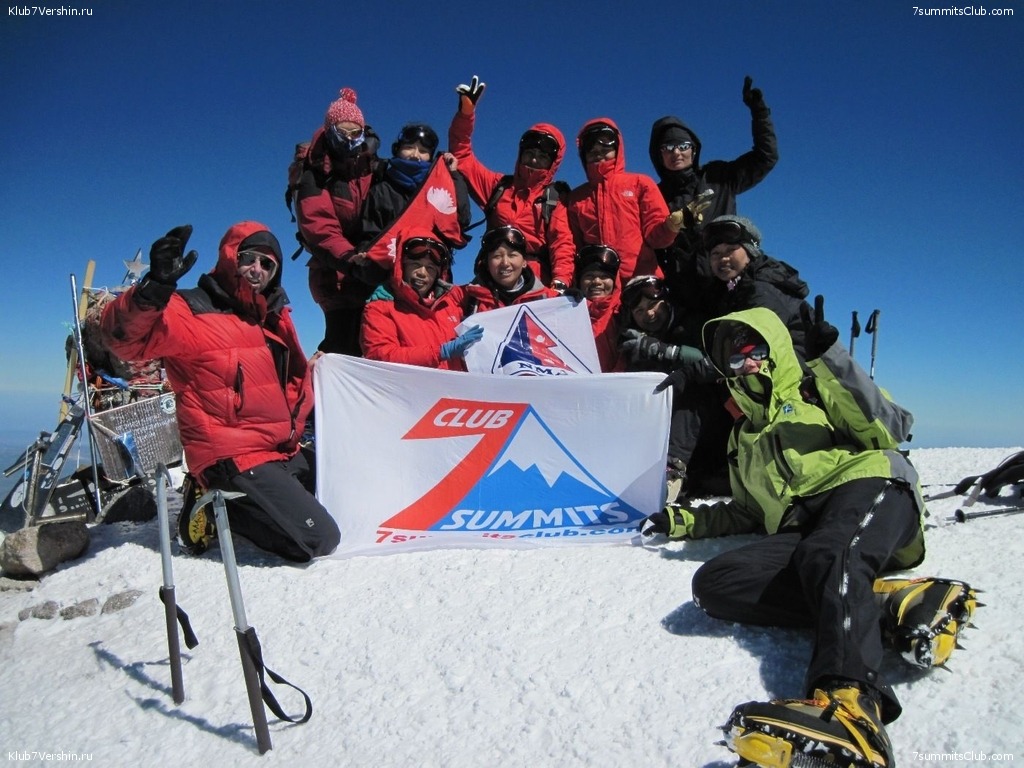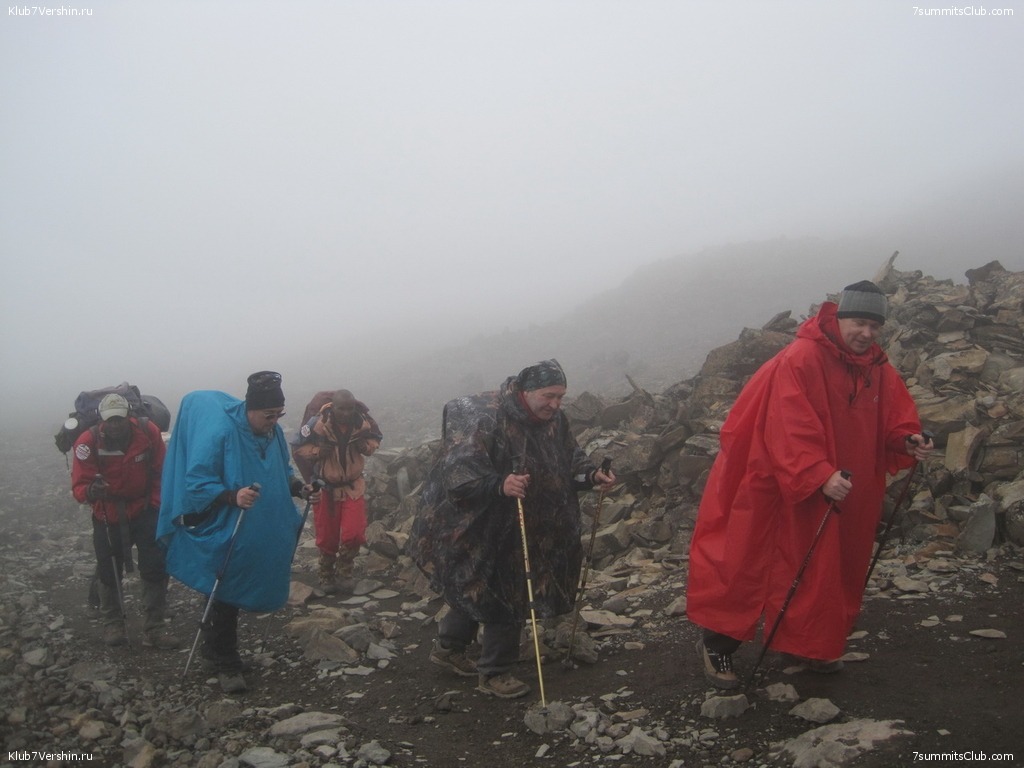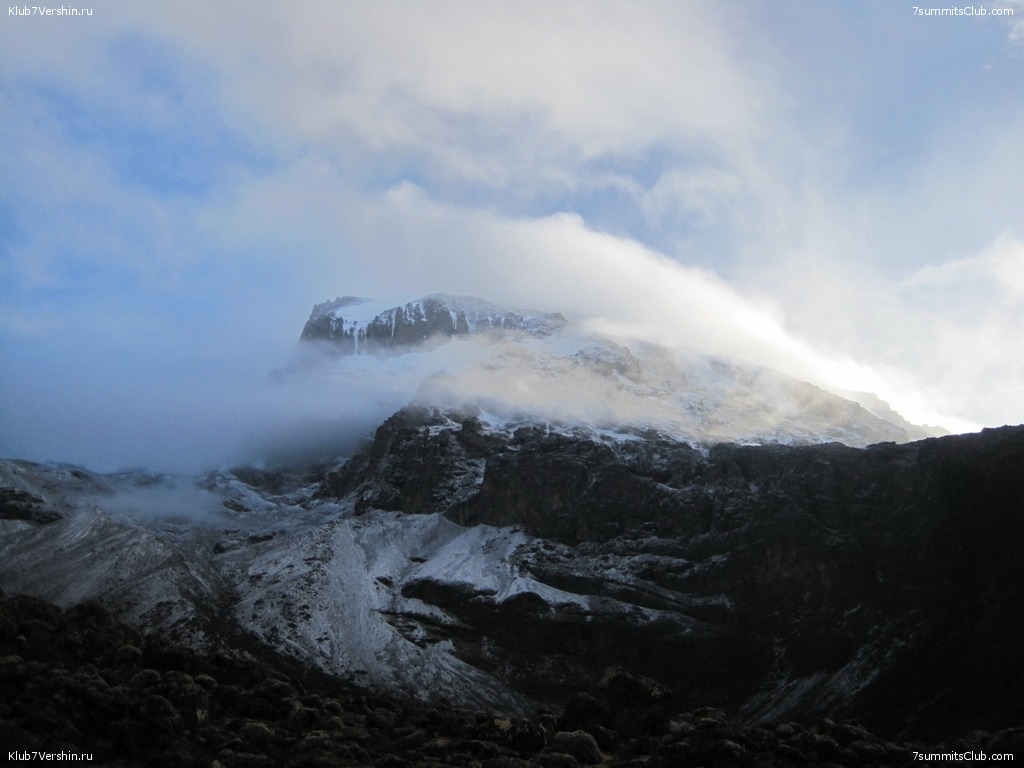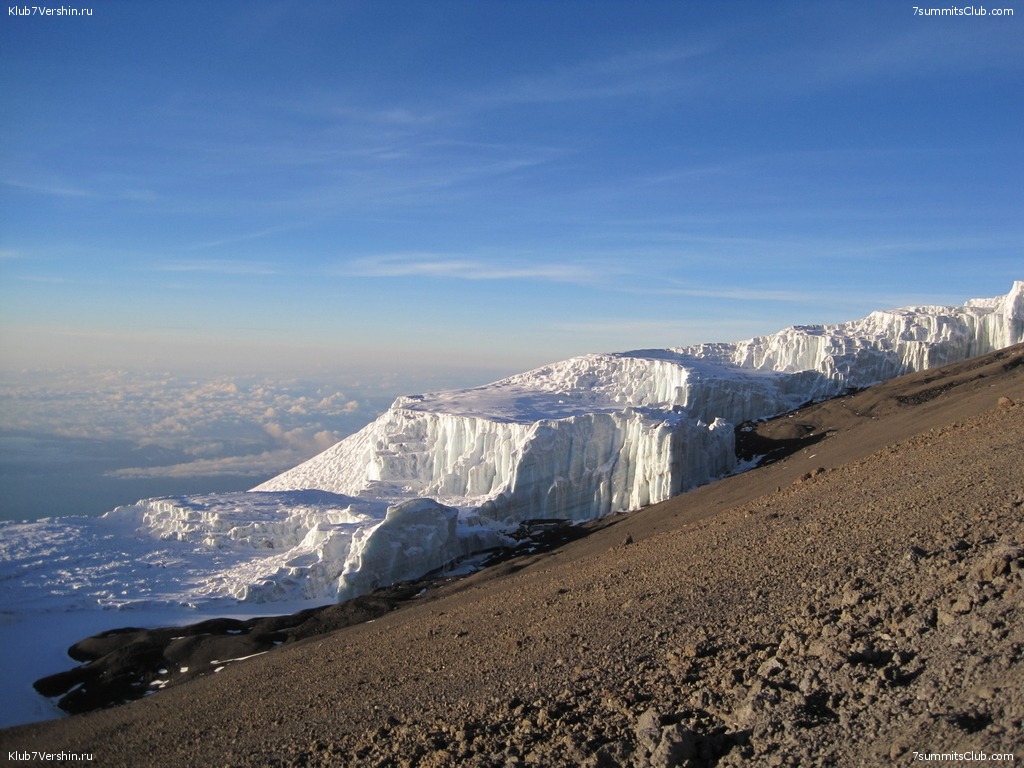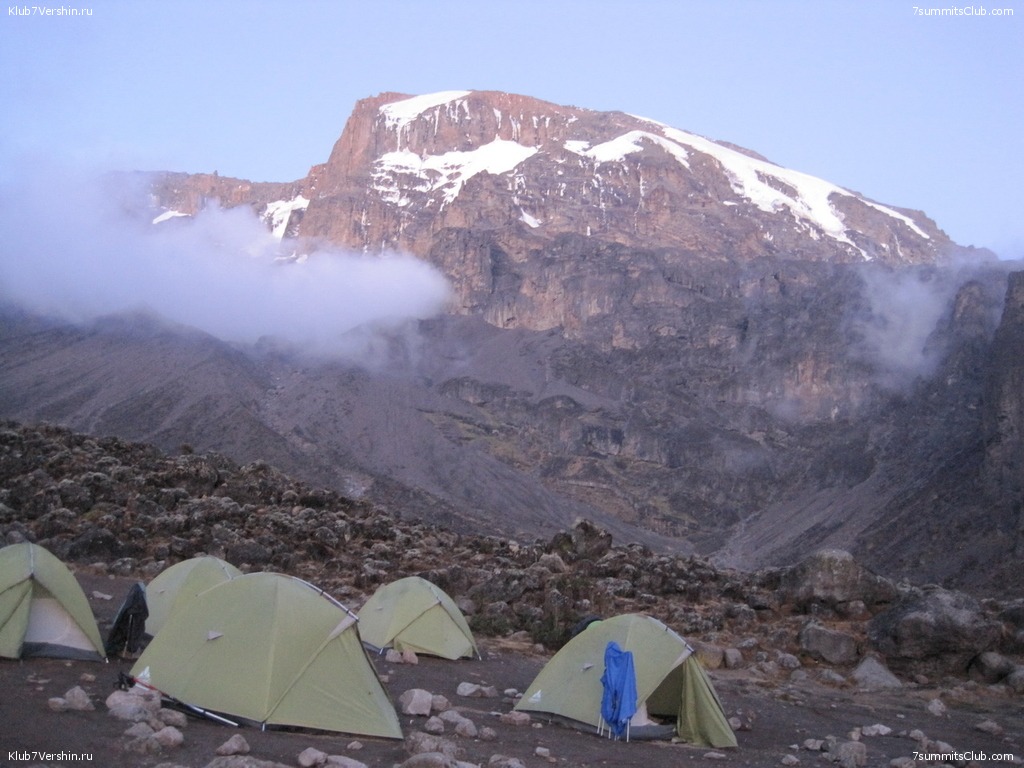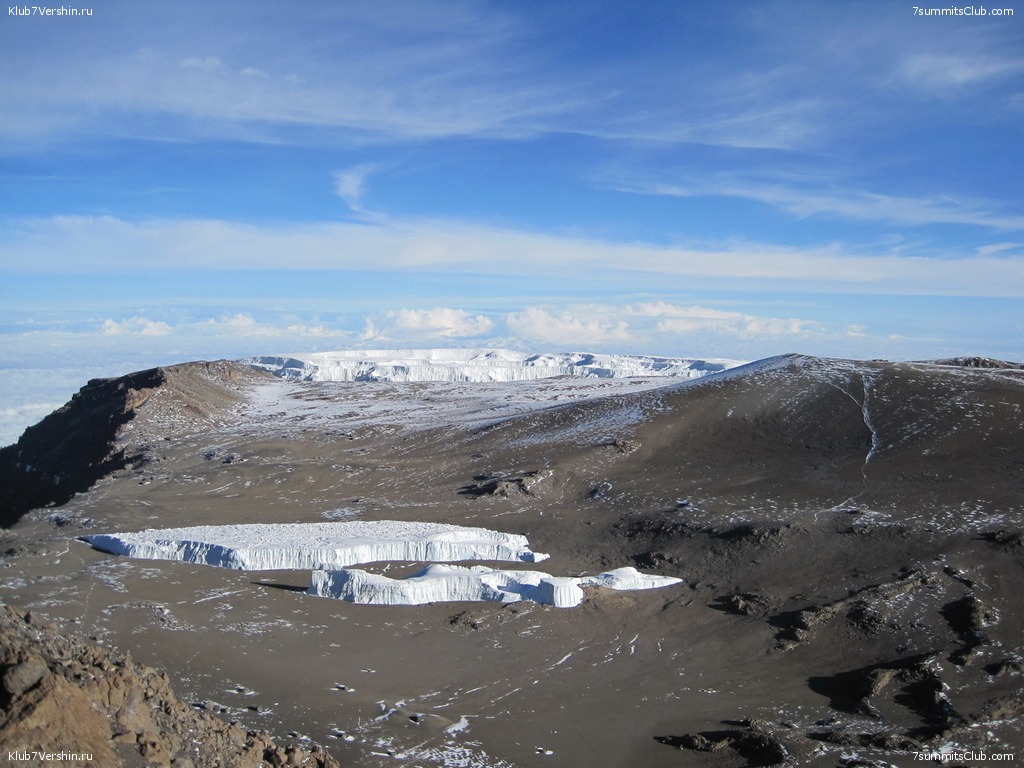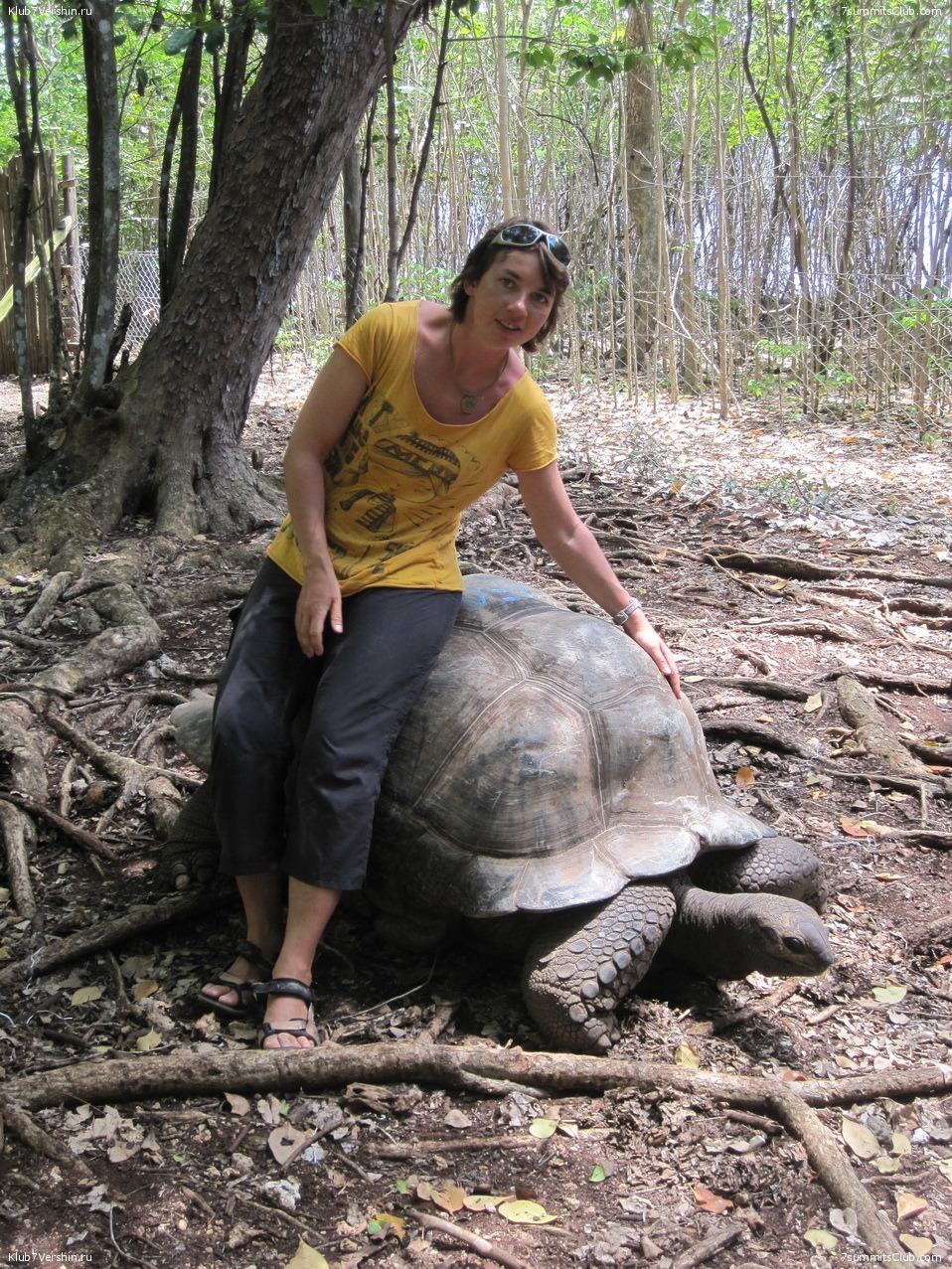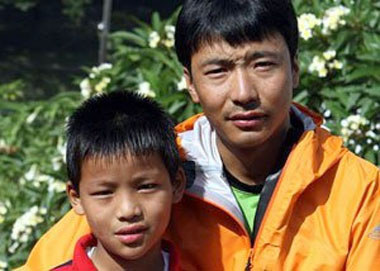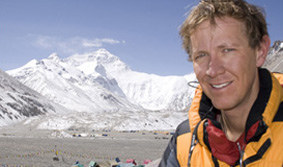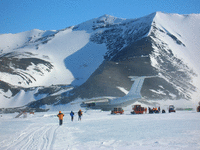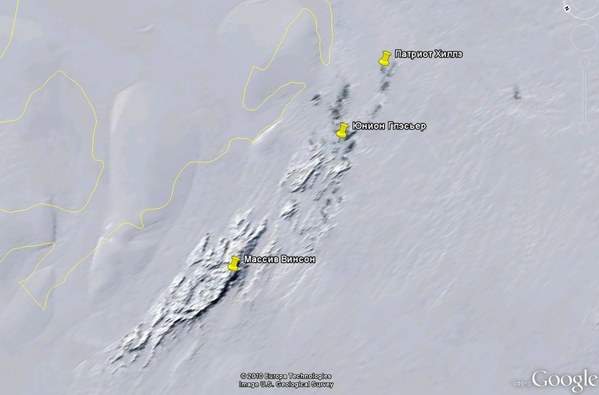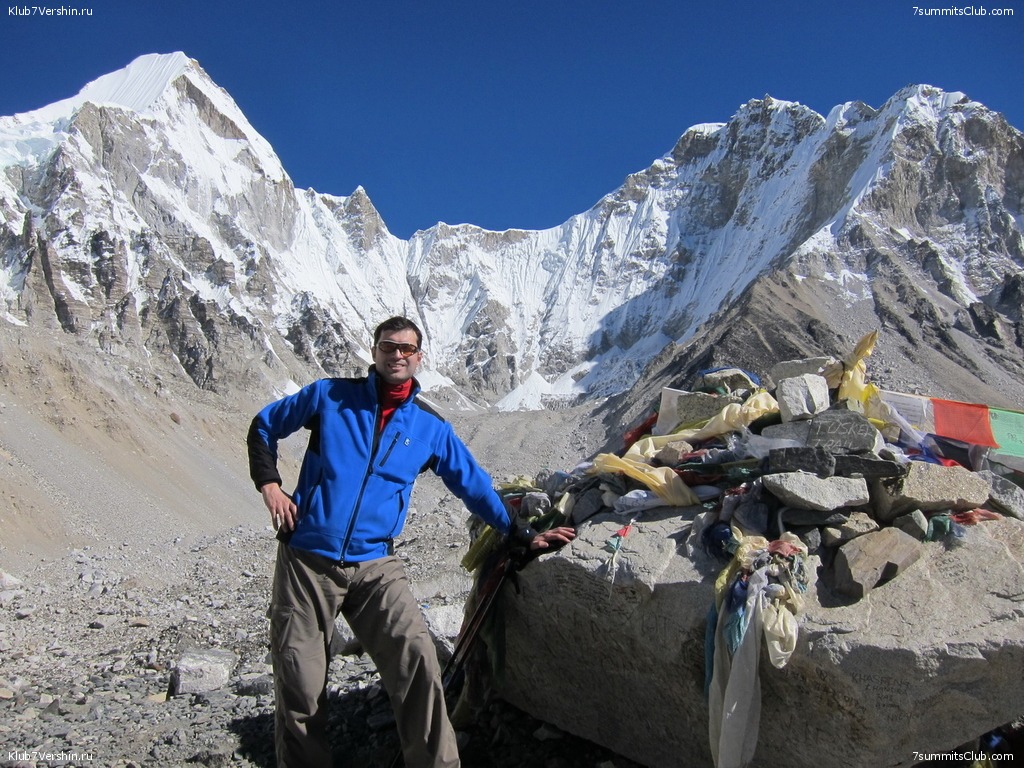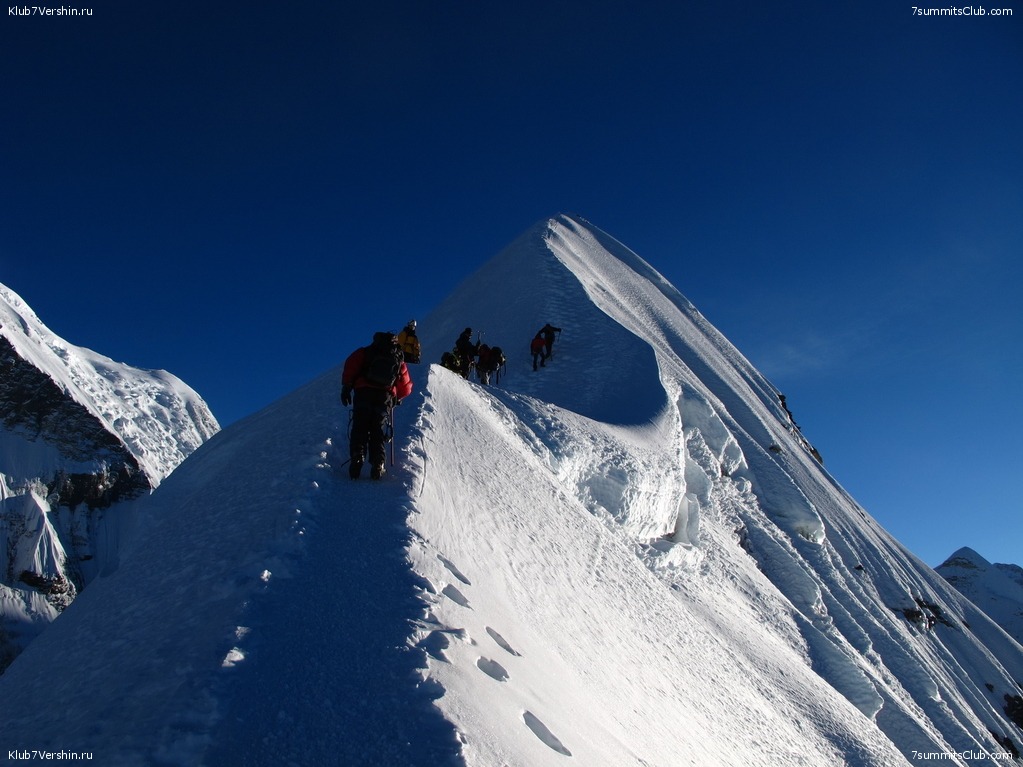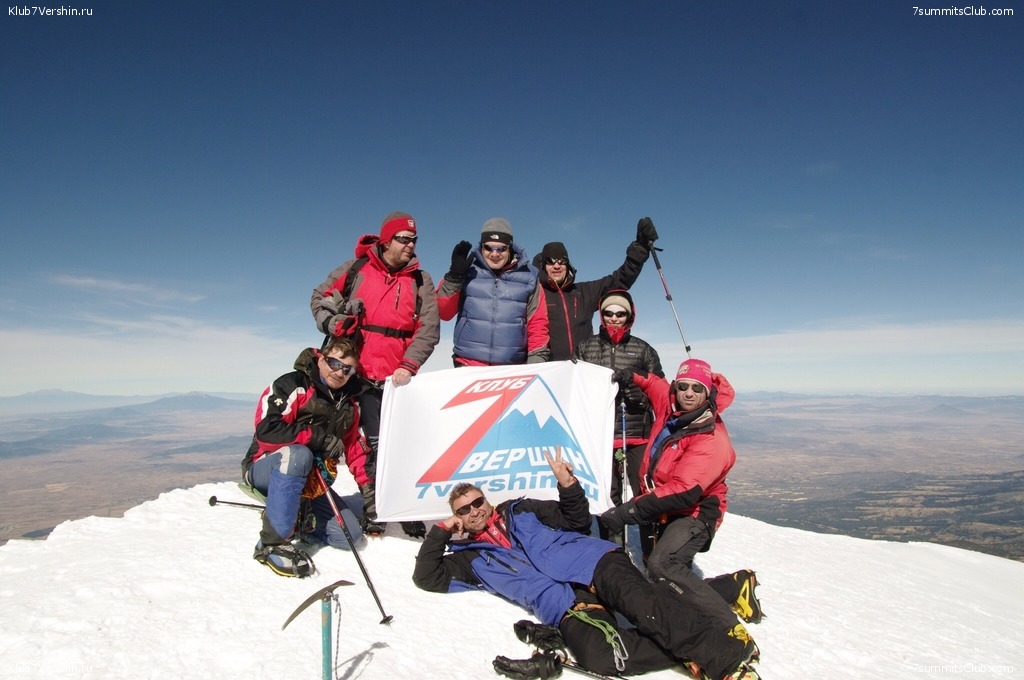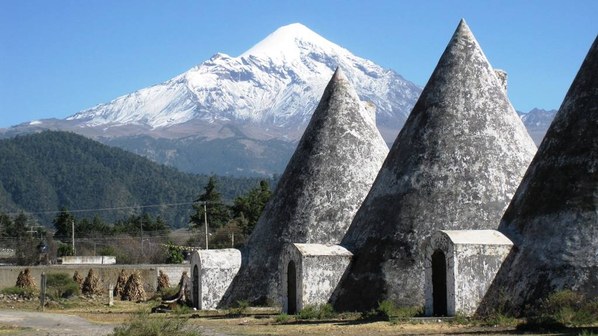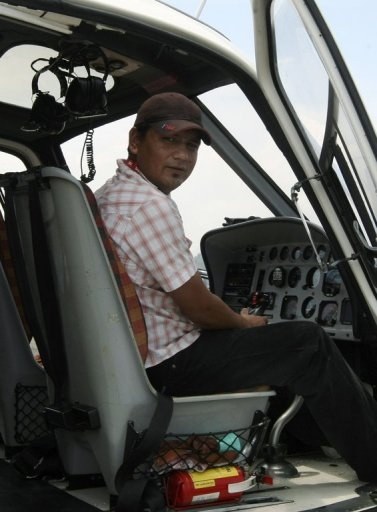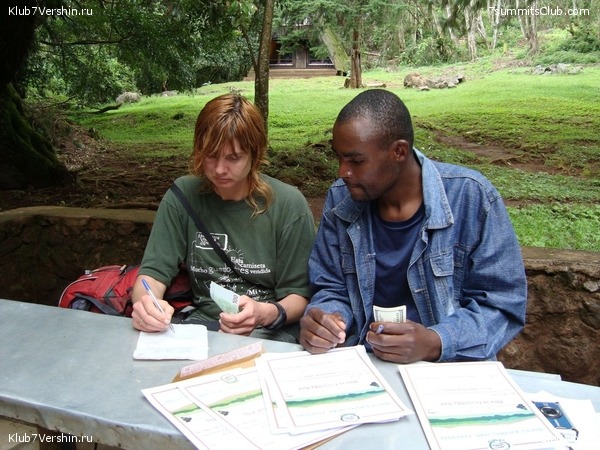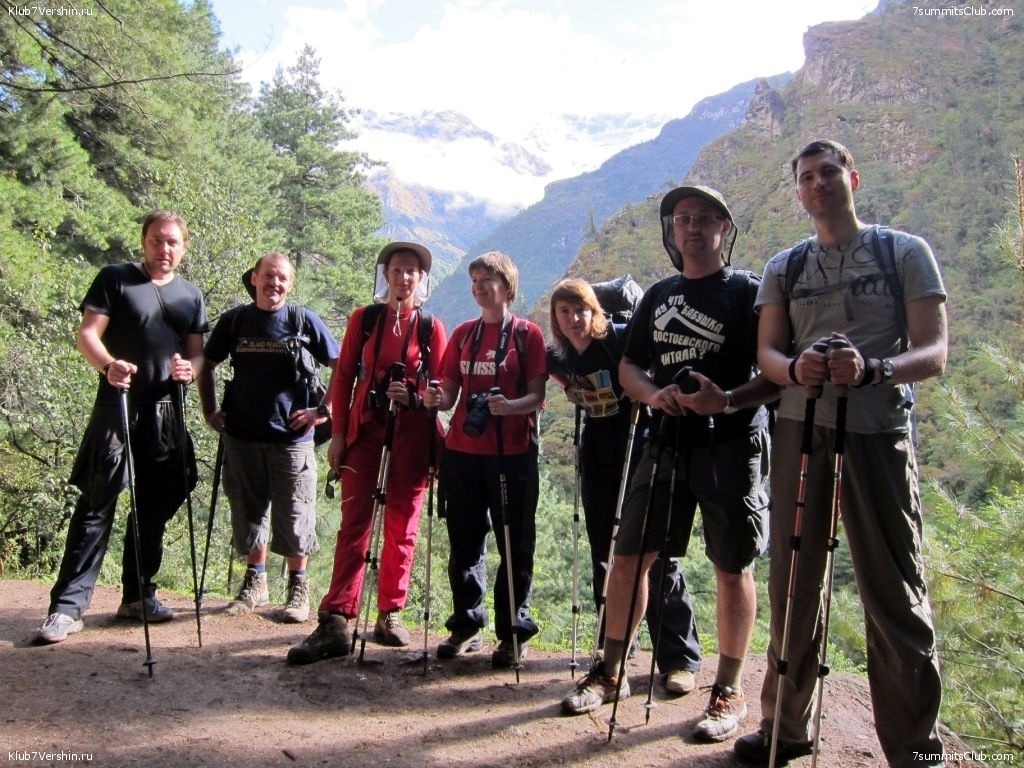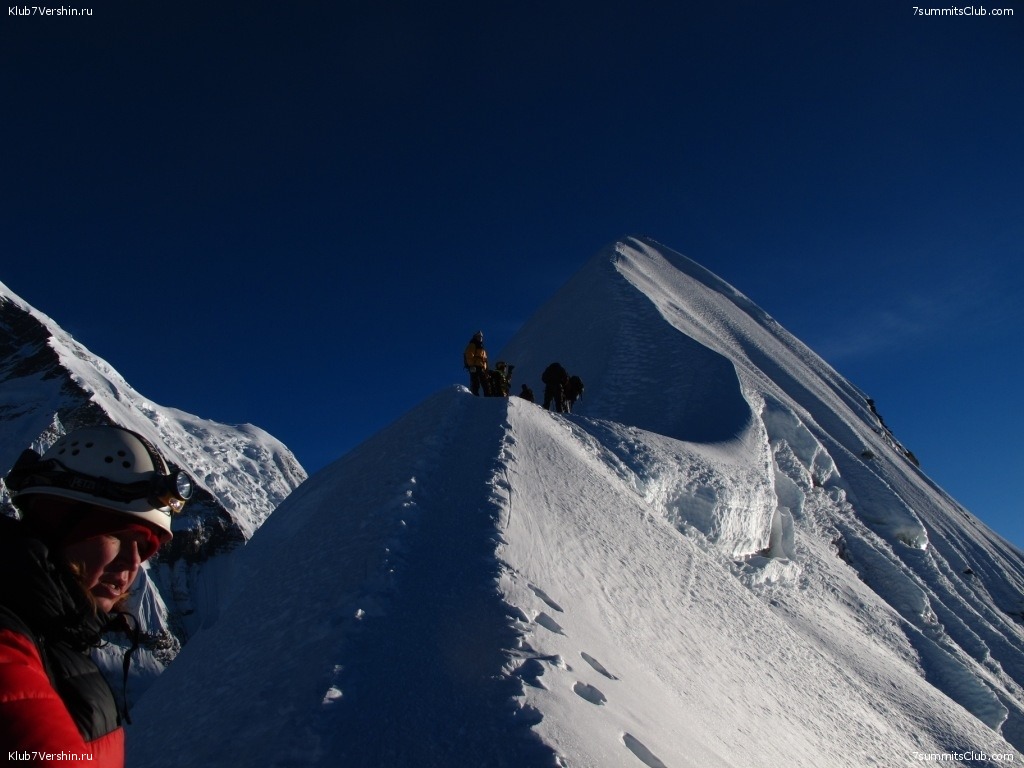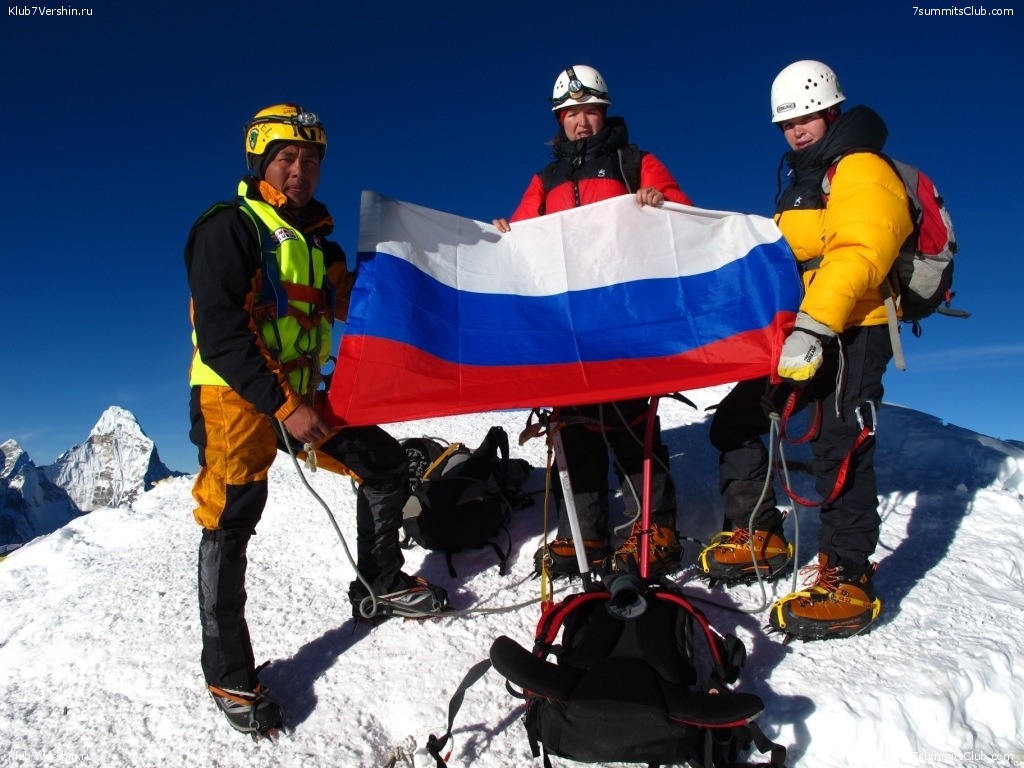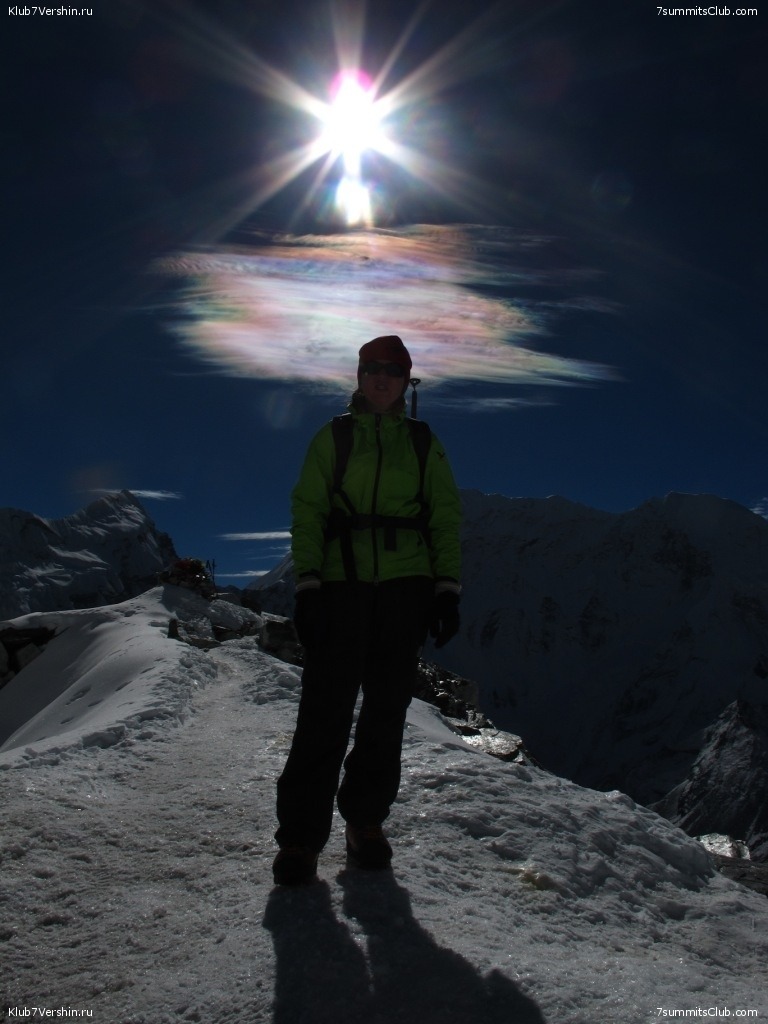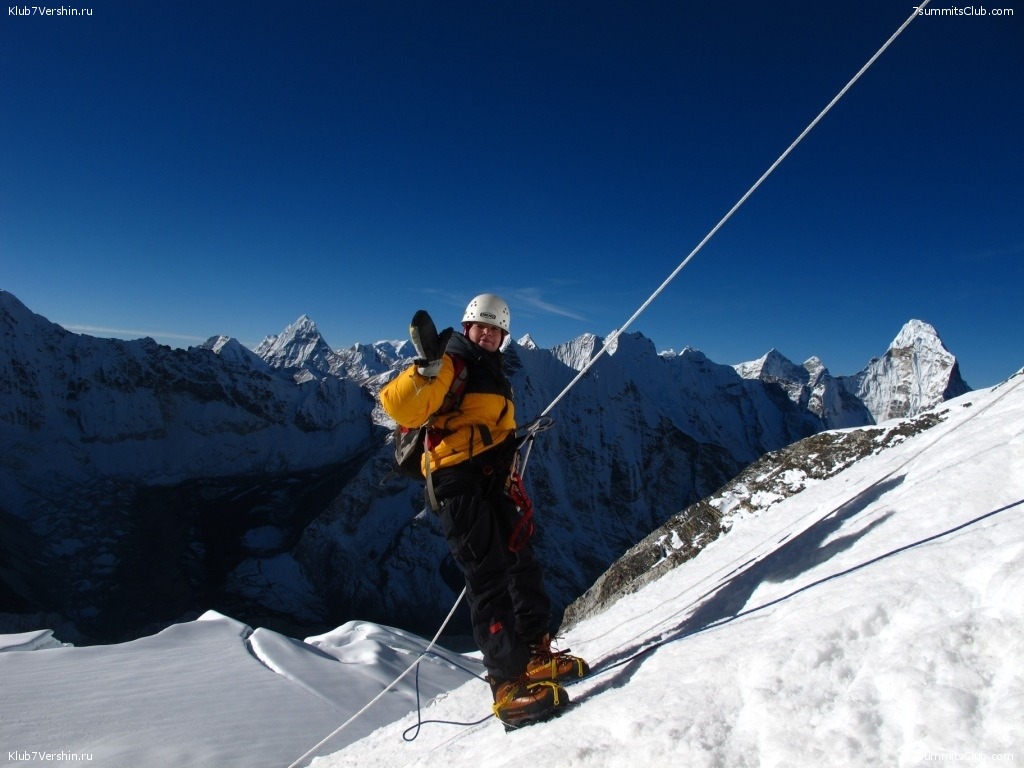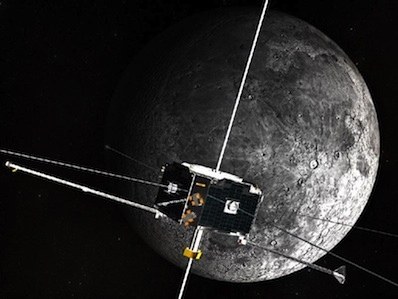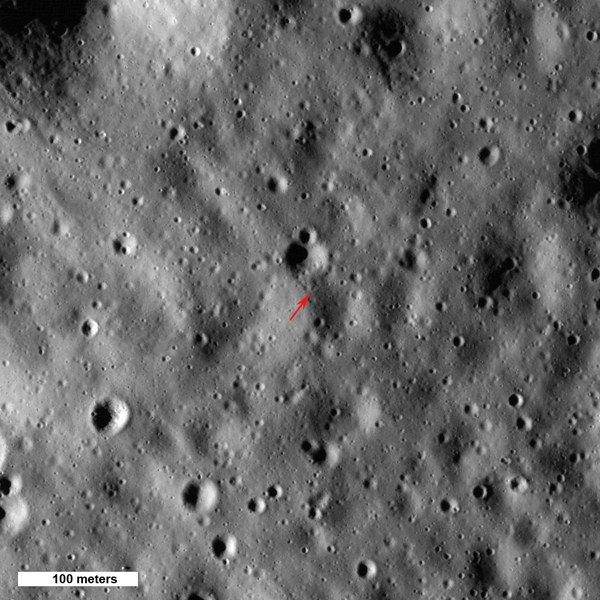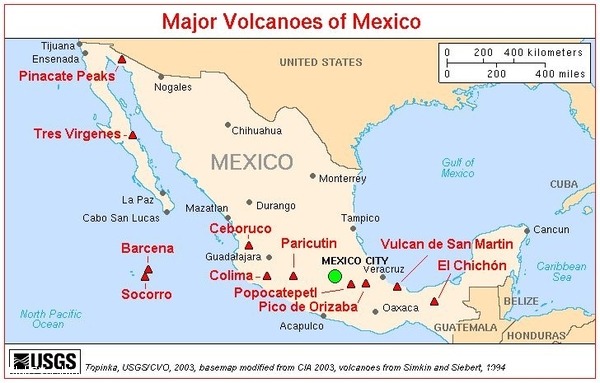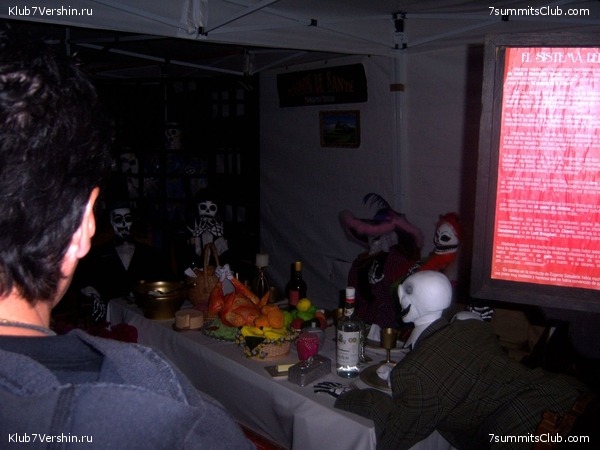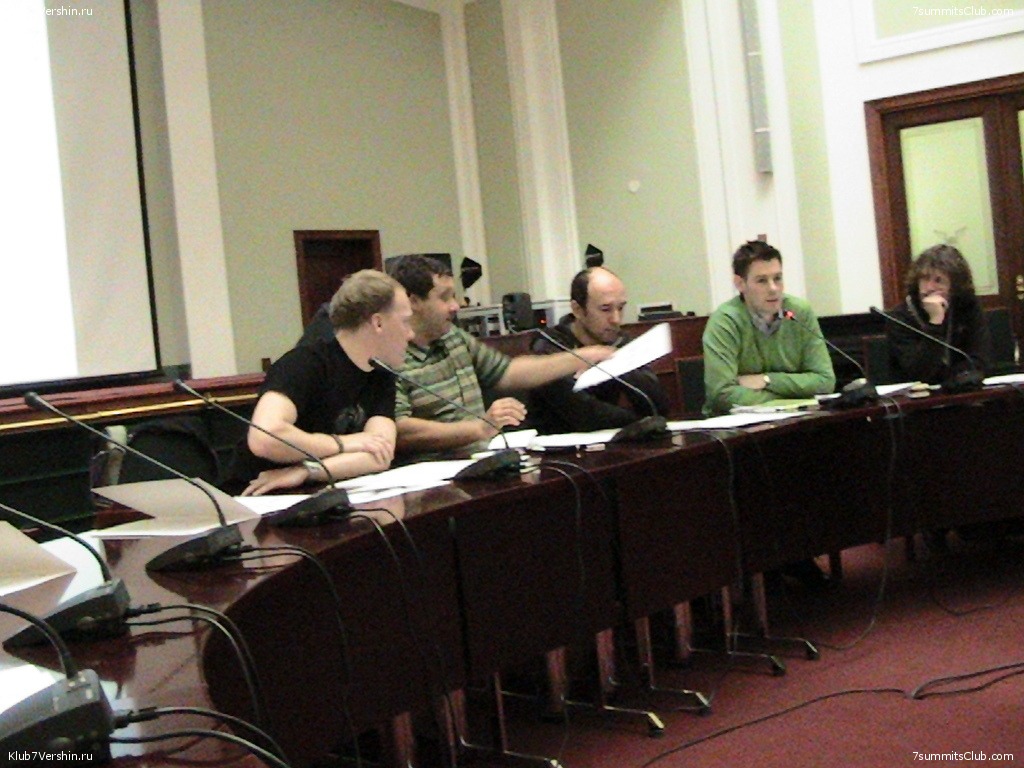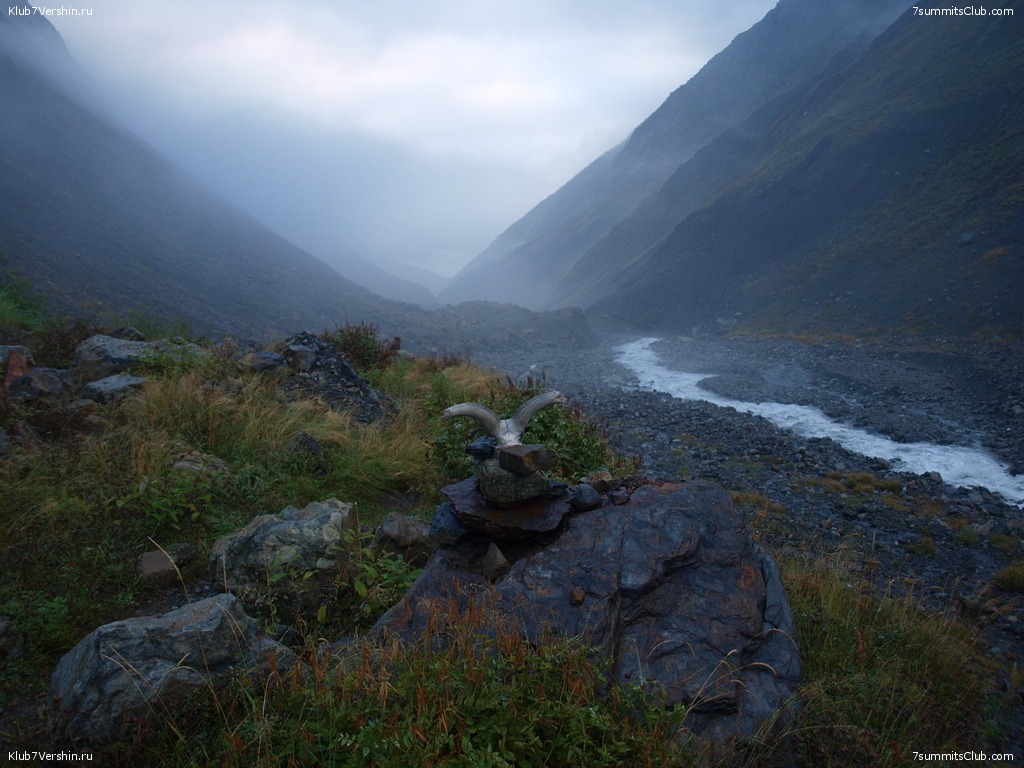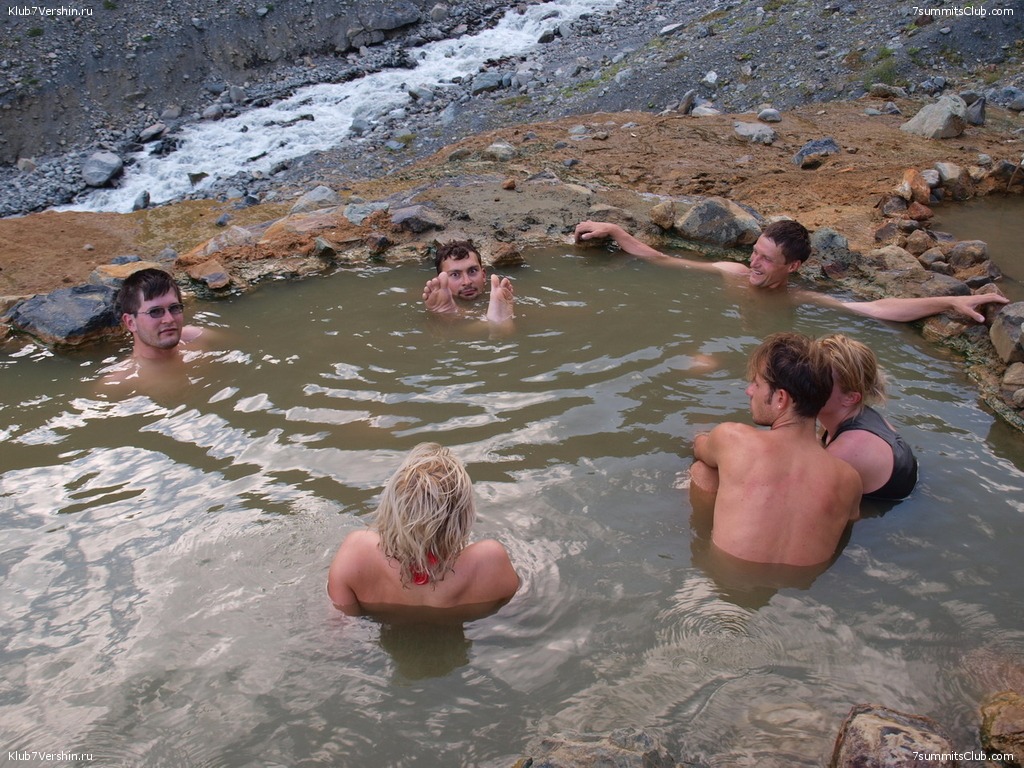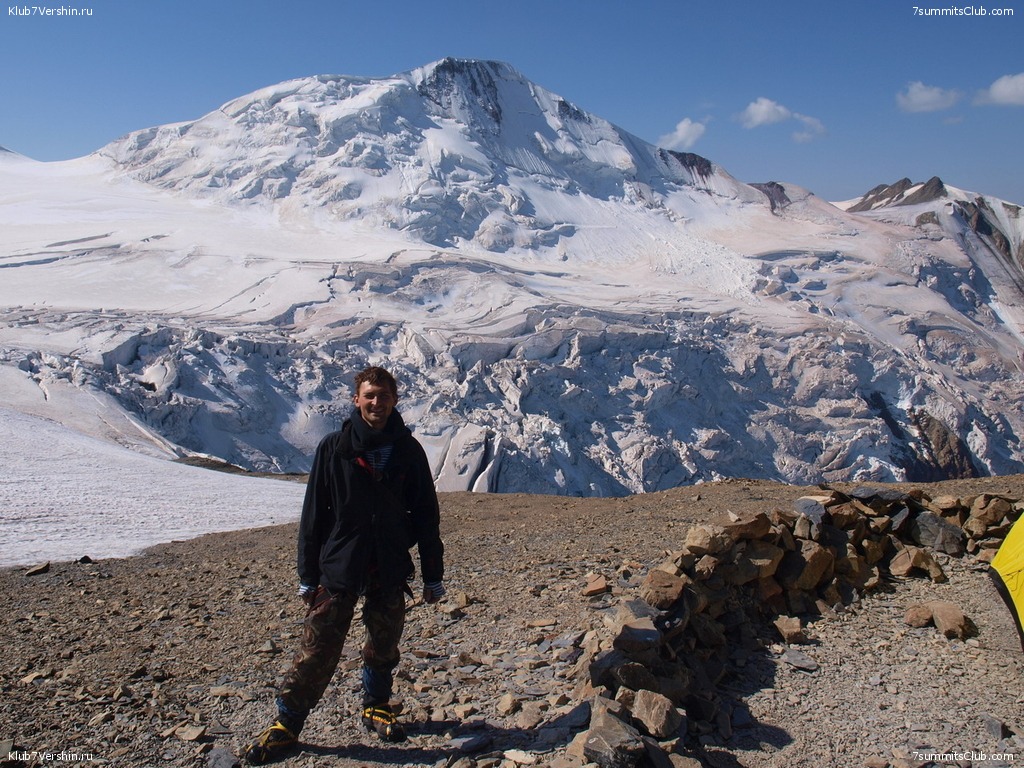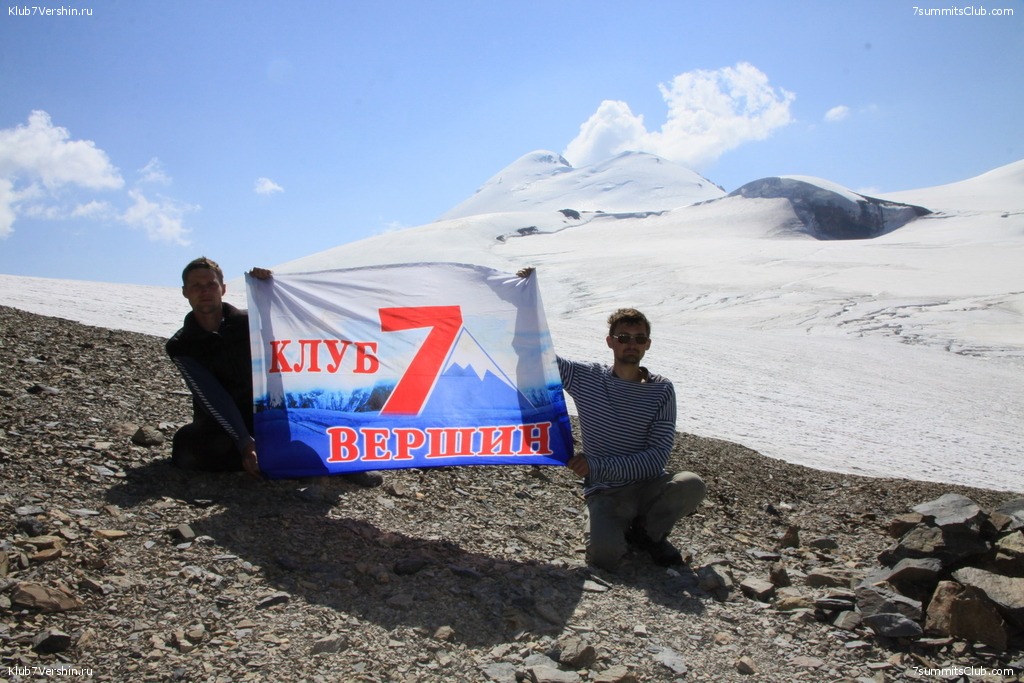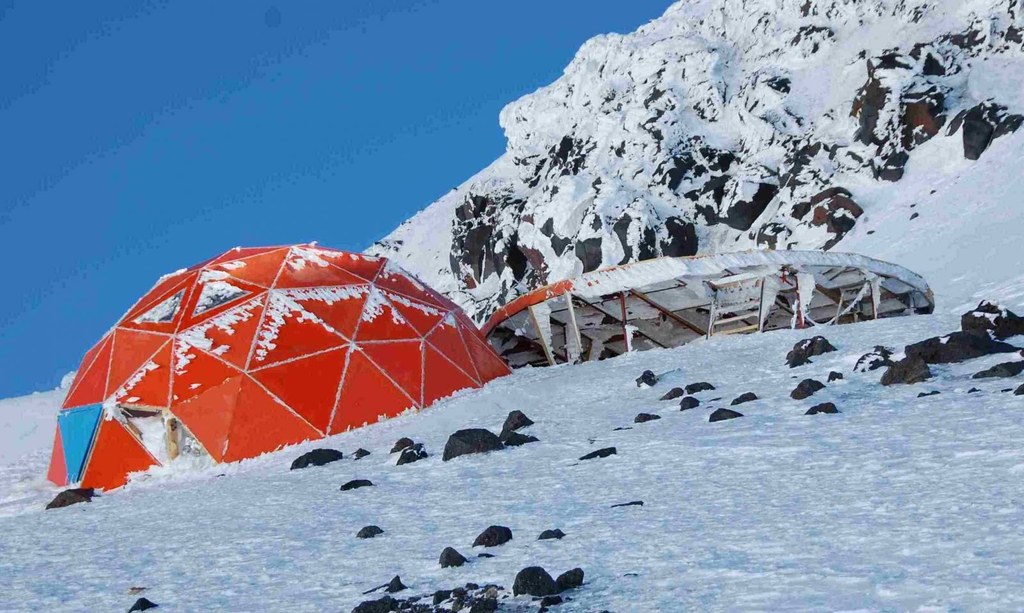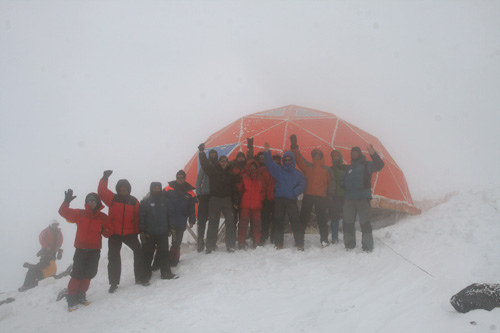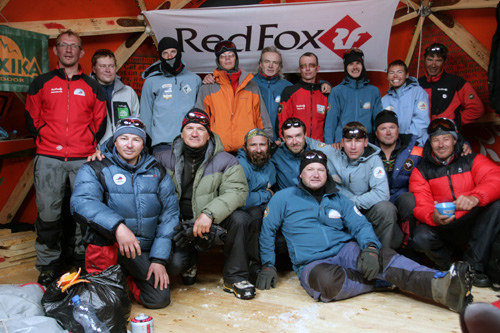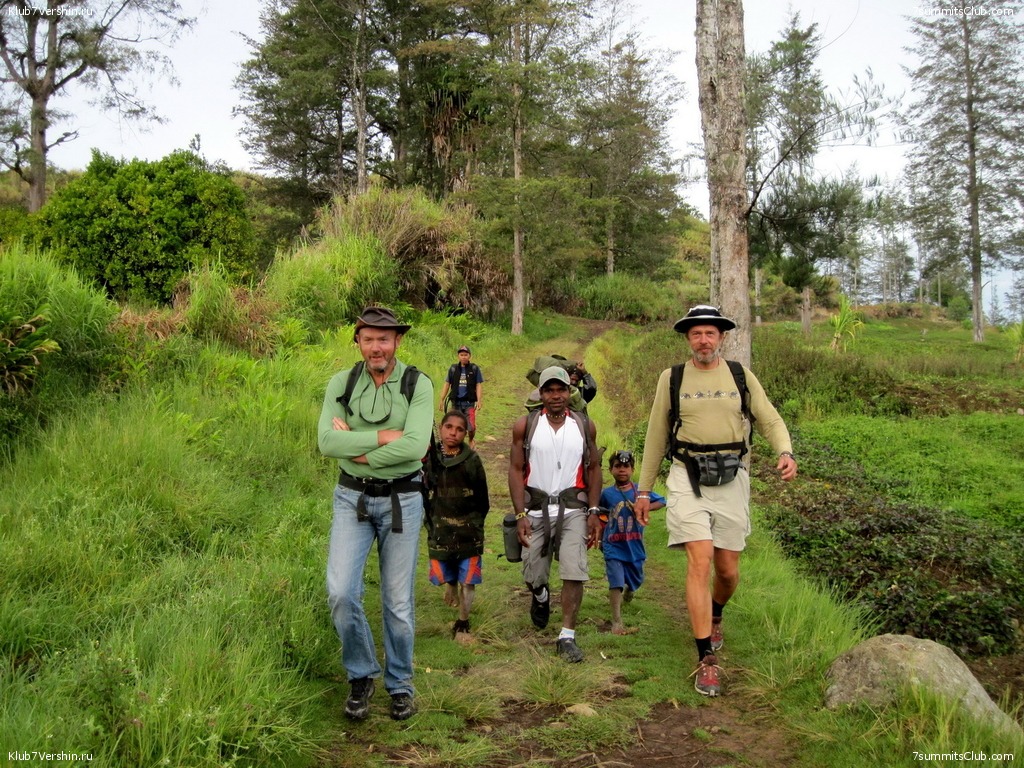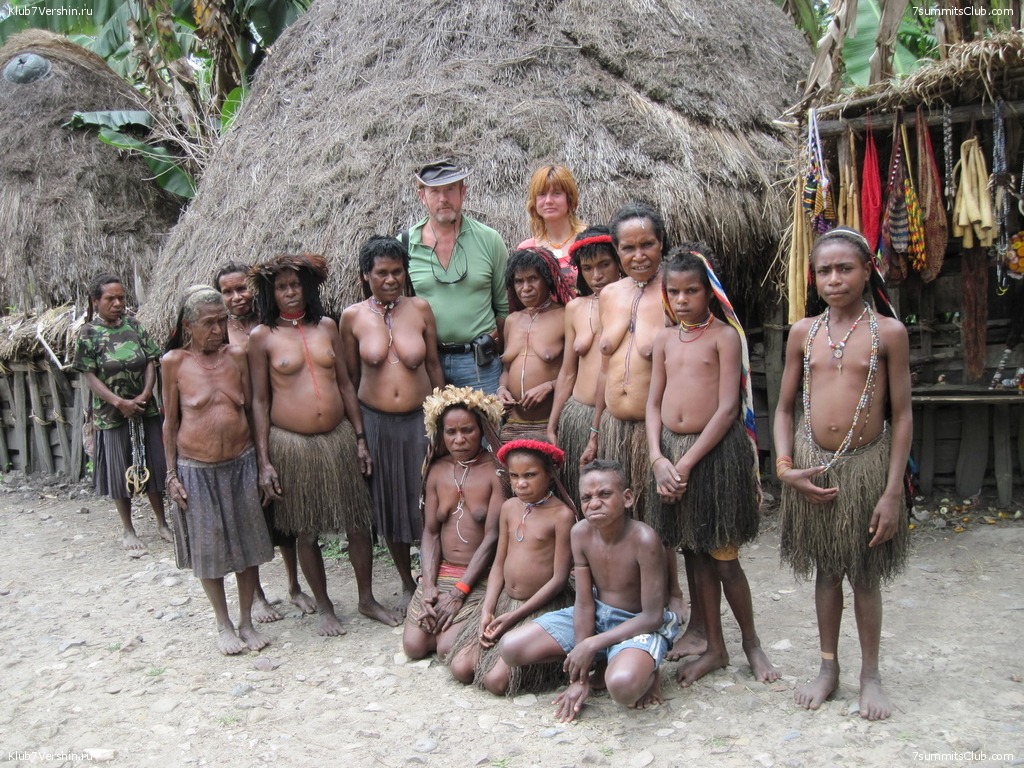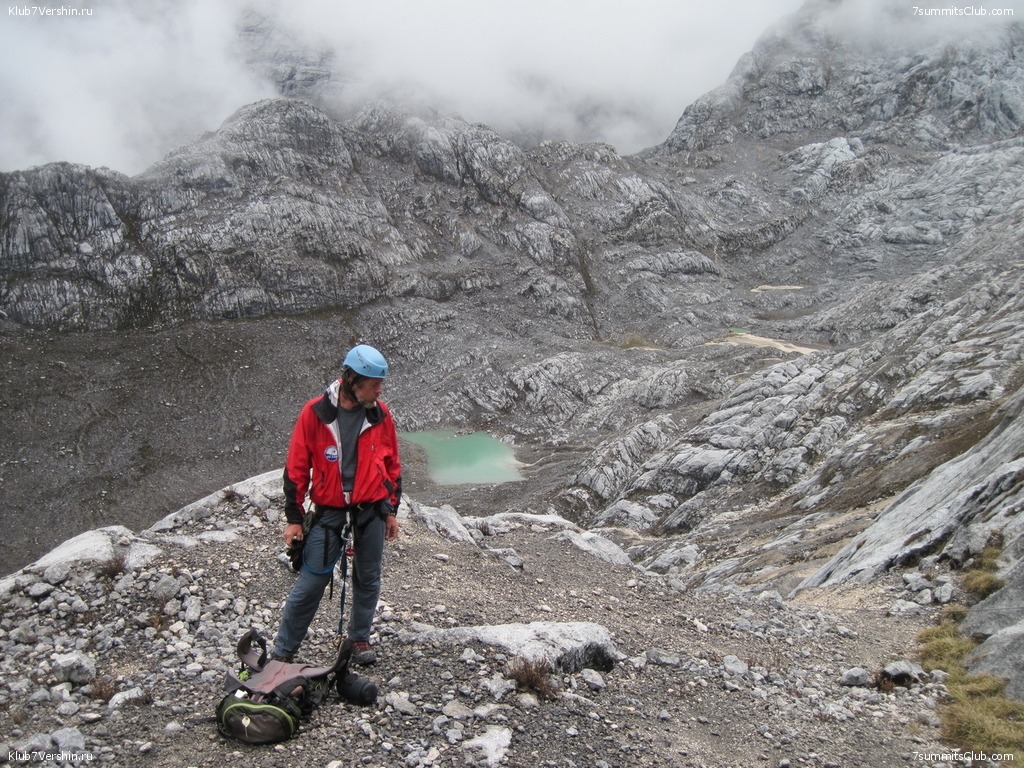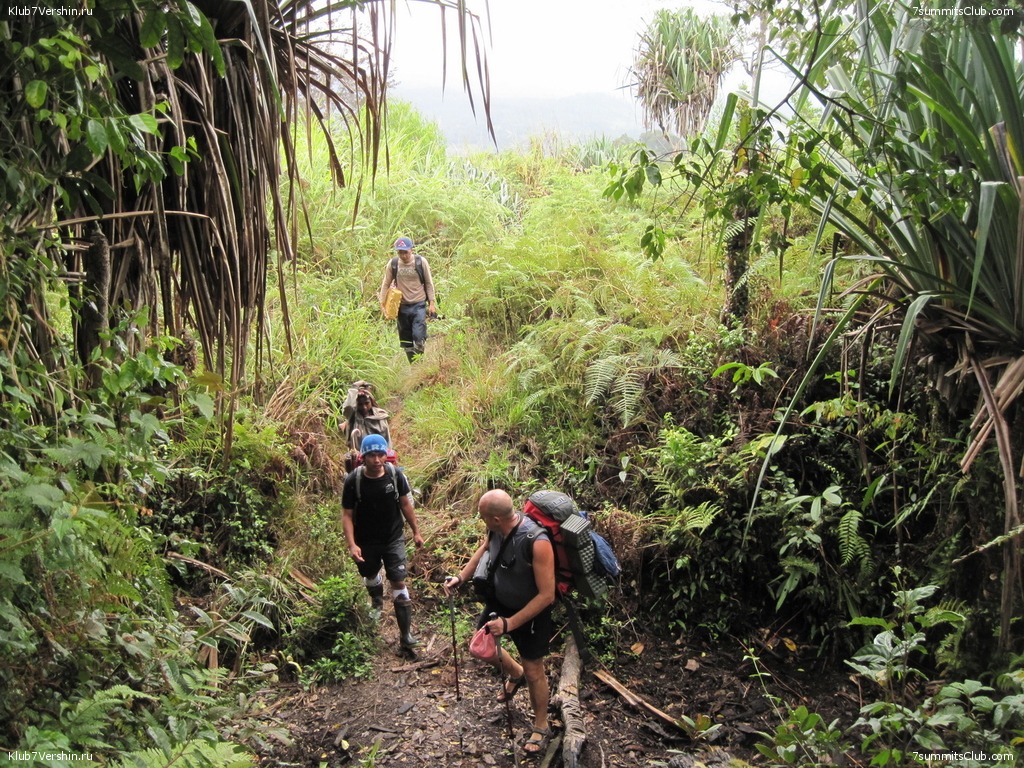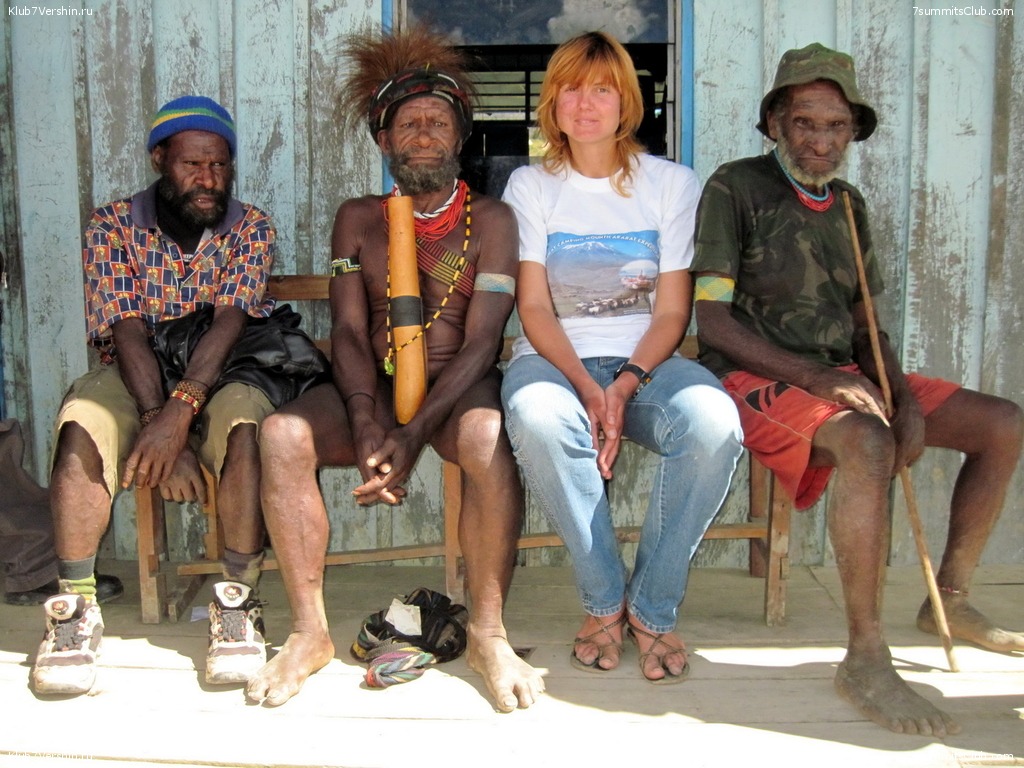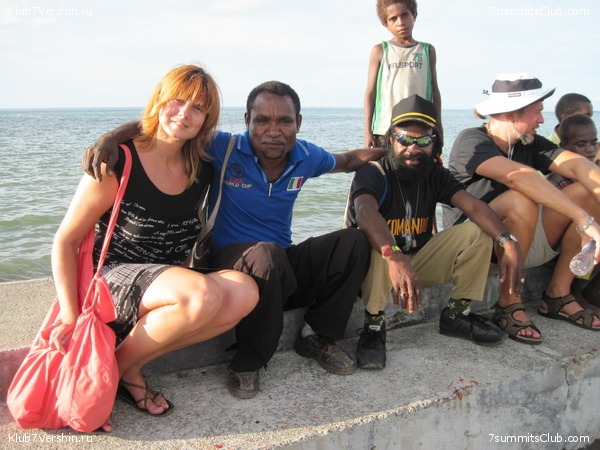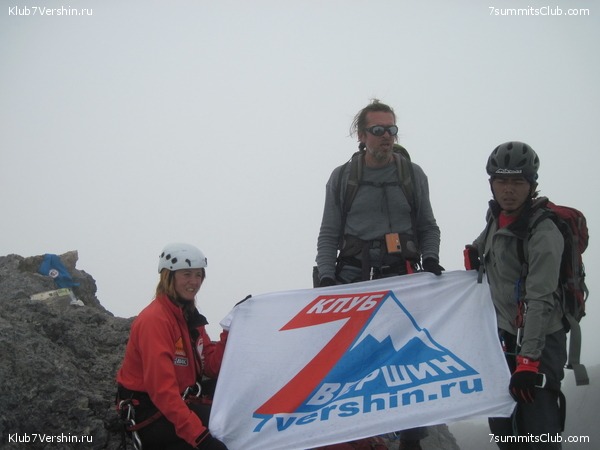All news: 2010
We have updated the registration system on our website, please check your dates
We finished the next stage of development of our Internet projects (our sites). We have made several important changes and improvements. And it is made for you, our friends. First of all, we changed the registration system. In this regard, ...
We finished the next stage of development of our Internet projects (our sites). We have made several important changes and improvements. And it is made for you, our friends. First of all, we changed the registration system. In this regard, we ask you to review your own data, which were transferred from the previous version of registration. Inform us if you have any problem with registration.
Also, now you can join not only the "7 Summits" project, but also you could register your achievements in other projects, namely:
3 Poles
A new is a total ranking of member - a summary from all these projects. We also added "additional" peaks and objects to these projects ...
And you can leave now your comments to news and articles. It is very important to us. On the one hand, we are happy just to hear from each of you. On the other hand, we look forward to use your comments to improve quality of our publications.
To register your achievements in projects use following links
Russian version http://7vershin.ru/enter/
English version http://7summits-club.com/enter/
Photogallery from Olga Rumyantseva, Machame route on Kilimanjaro, November 2010
Kilimanjaro.
Photogallery from Olga Rumyantseva, Machame route on Kilimanjaro, November 2010. "All along the way to the summit, we were either wet on the rain, or fall into the snow. Weather pleased us only on the day of ascent. It was not very cold, ...
Photogallery from Olga Rumyantseva, Machame route on Kilimanjaro, November 2010.
"All along the way to the summit, we were either wet on the rain, or fall into the snow. Weather pleased us only on the day of ascent. It was not very cold, almost windless and beautiful view. In the end, six persons climbed to the top: Alexander Osiev, George Karnaukhov, Vladimir, Ilya, Andrei (he is 16 years old and this is his first mountain) Fedortsovs, as well as guide the 7 Summits Club Olga Rumyantseva".
9-year-old to climb Mount Everest and more news
Everest.
(CNN) -- This year a 13-year-old from California stunned the world when he became the youngest person to summit Mount Everest. Now a 9-year-old Nepalese boy says he can do it, too. Or at least that's what the child's father is reportedly ...
(CNN) -- This year a 13-year-old from California stunned the world when he became the youngest person to summit Mount Everest. Now a 9-year-old Nepalese boy says he can do it, too. Or at least that's what the child's father is reportedly promising.
Sherpa Pemba Dorje, who holds the world record for the fastest Everest ascent (8 hours, 10 minutes), recently boasted that his grade-schooler will try to conquer the globe's tallest mountain in 2011.
To illustrate his seriousness, Dorje and his son Tseten last week climbed Mount Ramdung, a 19,440-foot peak in the Dolakha region of Nepal, according to the Himalayan Times daily and the Indo-Asian News Service. Dorje told reporters it was a practice run for Everest, which is more than 29,000 feet.
The notion of another baby-faced adventurer -- backed by an ambitious parent --sailing the widest seas or climbing the tallest mountain unearths a familiar question: Does inherently dangerous record-setting have an age limit?
"Little children do not belong on big mountains," said Jiban Ghimire, a Nepali renown for leading multiple expeditions on Everest. Ghimire's Shangri-La Treks & Expeditions, a go-to climbing assistance company, has employed Dorje as a guide. "I know Pemba Dorje, and I know he's said he wants his child to do this, that his son is capable of it.
"I would not want to discover, on that mountain, that the boy is not capable," Ghimire said. "I feel that you ask for something bad with this."
The obvious objections to allowing a child to climb Everest, or any major mountain, have to do with the physical toll it could take on his or her body. While there's no conclusive research that an adolescent is more susceptible to developing potentially fatal altitude sickness, anecdotes of mental and physical woe abound.
Past Everest climbers have experienced motor-skill dysfunction, sleep troubles, language disassociation and other problems that may be related to depriving the brain of oxygen while climbing, experts say.
Alan Arnette, a Colorado-based climber, has been on 20 expeditions from Tibet to Argentina. He most recently climbed 27,500 feet up Everest.
"Nobody doubts how talented Sherpa Pemba is," Arnette said. "Any Westerner would be smart to trust their life with him on the mountain. But that's any adult."
"When you get up there, it's not like you're gasping for air, you feel like you want to sit down and sleep forever -- that's altitude sickness," he said. "You have to be aware of what your body is doing and act accordingly. That's an adult's experience. Who knows what would happen to a developing child."
Besides, Arnette surmises that the odds of the boy making it past base camp are "just about zero."
The China Tibet Mountaineering Association, which regulates expeditions in Tibet, issued new climbing rules this year that ban anyone younger than 18 from climbing the Tibet side of Everest. A climber must be 16 to attempt Everest from the Nepali side. Penalties for breaking the rules are stiff, ranging from high fines to prison.
Arnette points out that every expedition must have a permit, which can cost tens of thousands of dollars. It's relatively easy for Everest authorities to catch someone trying to climb illegally, he said. Permits must be shown to officials when entering the park, and liaison officers from the Nepal Ministry of Tourism are assigned to each expedition group to help in case something goes wrong, and to ensure groups aren't leaving behind garbage.
In Dorje's case, everyone on the mountain knows who he is. He's clearly drumming up publicity for the climb. So why? Is it money? Arnette doesn't think so.
"No company or sponsor is going to get behind this. There's too much risk," he said. "My best guess is that he's motivated by national pride."
In May American Jordan Romero, 13, became the youngest person to summit Everest.
"I think all the Everest records should be held by Nepalese people," Dorje told London's Daily Mail.
Jordan received worldwide press for his feat, most of it glowing, and he encouraged younger kids to follow in his bootsteps. "Age is not a matter," Jordan told reporters in Kathmandu a day after he returned from his climb, which took 10 months and 10 days. "My body did cope with the altitude very well."
The teenager broke a record few thought possible.
"The American boy is famous. When many people think of Everest, they say his name," Ghimire said. "But a mountain doesn't care who you are."
*************************************************************************
Adventurer Chessell hangs up his boots
Adelaide adventurer Duncan Chessell, a three-time conqueror of the world's highest mountain, has hung up his climbing boots and is planning to go prospecting for gold and uranium.
Chessell has joined newly formed company Endeavour Discoveries as its managing director and will take a break from leading expeditions to such places as the Himalayas or Antarctica for a few years.
"I have faced many challenges and overcome almost all of them by working with extraordinary teams of people on seven continents and have enjoyed almost every minute of it," Chessell said in an email to his clients and supporters on Monday.
"I have now reached a stage where I am over living from backpacks though.
"So thanks for coming along for the ride, sail, paddle, walk, climb - it has been simply awesome."
In May this year Chessell became the first Australian to reach the summit of Mt Everest three times in an expedition hampered in its final push by heavy snowfalls.
His triumph followed his two previous trips to the top of the world in 2001 and 2007.
Chessell has sold his Chessell Adventures company to friend and sales and office manager Katie Sarah. Sarah was part of the group that reached the Everest summit this year.
As the boss of Endeavour Discoveries Ltd, he plans to take the company to a public float in the next 12 to 18 months. "We are aiming to discover gold and uranium deposits in South Australia and the Northern Territory," he said.
**************************************************************************
Bad Weather Strands Thousands near Mt. Everest
Flights are still grounded at the air strip closest to Mt. Everest, stranding around 2,000 foreign tourists, including some Americans, in the small town of Lukla in eastern Nepal.
"Again the weather was very bad today," wrote Phurba Gyeljen Sherpa, proprietor The Irish Pub and Internet Caf?. "Very few airplanes were able to go out and the Americans here, and other nationalities, have grown weary and frustrated."
The military stepped in and posted flyers at the airport telling people not to pay more than $350 for private helicopter companies.
"Then they flew in large MI-17 military transport helicopters, cable of carrying 24 people each," continued Sherpa.
The military chose who would fly out first by who was stranded there the longest, instead of those willing to pay the most money.
Since there was only a brief period of good weather, the military quickly ferried the stranded people to a nearby airstrip in Ramechhap, where the weather was more stable.
When the weather destabilized, the military returned to Ramechhap and tourists to Kathmandu.
Slightly over 75 percent of westerners were evacuated.
******************************************************************
Will Wi-Fi ruin Mount Everest?
Broadband arrives on the world's tallest mountain. But having hiked it, I worry the magic will vanish
By Jeff Greenwald
When I began my career as a travel journalist in the 1980s, there was lots of talk about "remoteness." This was what many travelers were looking for: places so hard to get to, and so different from the world we knew, that their very existence seemed almost miraculous.
Today, the value has shifted. What we look for now is connectedness: the opportunity to check our e-mail, upload video clips and chat on Skype -- even if we happen to be on the Khumbu Icefall, 18,000 feet high in the Nepal Himalaya.
Last week, a network of eight 3G base stations began operating along the route to Mount Everest, in Sagarmatha National Park. They were installed by Ncell, a Nepali telecom firm. The news didn't surprise me. But I felt that, irreversibly, another blow had been struck against magic.
Access to the Internet is starting to seem like a human right, so let me offer a disclaimer. There is no rational downside to the arrival of broadband on the flanks of Everest. I'm not a Luddite, and would never suggest that developing nations should be denied, for any reason, the global access that technology can provide. This 3G network will undoubtedly save lives -- not only by providing weather information and support to Everest climbers and trekkers, but as an alert system for the nearby villages threatened by flash floods from Glacial Lake Overflow (GLOF), another peril caused by global warming.
It's a good thing. So why did the news make me feel like Robert Conway in "Lost Horizon," looking back on a land to which I can never return?
During my earliest visit to Nepal in 1979, phoning home even from Kathmandu was an adventure. I'd bike to the Telecommunications Office at 2 a.m. (mid-afternoon in New York), fill out a form, and wait hours for my trunk call to go through. The costly result was often a busy signal -- or a barely audible connection. The most reliable means of communication was "snail mail": a metaphor that, with three weeks of lag time between a letter and its response, seemed literally true.
Even this much contact was a marvel, compared to the situation in the mountains. When I first trekked the Everest route, in October 1983, it felt as though I'd entered a world completely detached from the familiar. After a harrowing flight to the tiny airstrip at Lukla, the 10-day hike to Base Camp (with an elevation gain of more than 8,000 vertical feet) began. Immersion in the Sherpa Buddhist lifestyle was inescapable, and transformative. Phone calls were impossible. Even writing a postcard was like putting a message in a bottle, and tossing it out to sea.
None of this seemed like an inconvenience. Though there were bouts of homesickness, and the occasional longing for new music and old friends, it was exhilarating to have entered such an isolated realm. This, actually, was the point. Travelers embarked on our journeys to Everest or the Annapurnas aware that it would be a full-body experience -- an equation that included our brains.
As a result, trekking in the Himalaya never felt like sightseeing. It was a commitment to the here and now, demanding full-time engagement with both Nepalis and fellow travelers. There were infinite opportunities to forge new friendships, experience Sherpa Buddhist culture, or enjoy exquisite solitude. By day, you could walk alone or with companions; at night, the lodges flickered with candles and butter lamps. Out came the maps, backgammon sets and tattered journals. Tales of avalanches and Yeti sightings were shared, along with cups of the dizzying local rakshi.
During my most recent trek to Everest region in 2008, it was clear that the area was changing. Though the mountains looked the same, they felt less like a world apart. For one thing, it was a lot more crowded; an estimated 15,000 trekkers shared the narrow trails. Cellphones were already in use between the main villages, and the isolating aspects of technology were taking hold. Sherpa guides and sinewy porters marched up the steep mountain grades with telltale white headphone cords snaking beneath their parka collars, lost in the private soundtracks of their MP3 files.
Getting online was a different story. There were only a handful of cybercafes along the trekking route -- the highest of which was at Everest Base Camp itself, at 17,500 feet -- with Internet access via satellite. Connections were sluggish; it often took Gmail more than five minutes to load. Sitting in a cozy inn, immersed in conversation, was far more seductive than surfing the Web.
The arrival of 3G will change all that -- and not just how quickly trekkers can upload their photos to Flickr, keep tabs on their investments, or stream the latest episode of "Mad Men." Wireless broadband, barely imaginable even 25 years ago, will change the way future travelers and locals interact in the world's highest mountains.
For the Sherpas of Sagarmatha, of course, it may well seem that one kind of magic has simply been traded for another. Broadband on Everest! What next? If the Yeti buys an iPad, he might even decide to "friend" Bigfoot on Facebook.
For the rest of us, this constant connectedness may have a bittersweet aftertaste. My recent trek into the Himalaya was a reminder of the pleasures of remoteness. It was a joy to escape from the hamster wheel of distractions, and immerse myself in the expanded moment of real time. Because being connected -- really connected, with the place you're in and the people you're with -- requires disconnecting, at least temporarily, from everywhere else.
We are far past the time when we can expect to a find a Shangri-la, anywhere, beyond the reach of the Internet. But as the world races toward connectivity, travelers might stop to consider why we travel in the first place, and which connections we really want to make.
Autumn 2010, summary from Ang Tsering and Explorerweb
Nepal Expeditions - Autumn 2010 (Government Peaks): The following is the detail of the permits issued to expedition teams for 8000m Peaks by the Ministry of Tourism and Civil Aviation in this Autumn Season 2010: 2 Teams of 1 member each on ...
Nepal Expeditions - Autumn 2010 (Government Peaks):
The following is the detail of the permits issued to expedition teams for 8000m Peaks by the Ministry of Tourism and Civil Aviation in this Autumn Season 2010:
2 Teams of 1 member each on Mt. Everest (Nepal Side)
2 Teams with a total 6 members on Mt. Lhotse
8 Teams with a total of 86 members on Mt. Manaslu
2 teams with total of 9 members Mt. Dhaulagiri from Nepal Himalayas
The above figures do not include the number of high altitude Sherpa (HAS) climbers.
Tibet Expeditions - Autumn 2010:
The following are the teams permitted on 8000m Peaks in Tibet:
2 Teams with a total of 12 climbers on Mt. Everest (including HAS)
25 Teams with a total of 340 climbers on Mt. Cho-oyu (including HAS)
3 Teams with a total of 45 climbers on Mt. Shishapangma(including HAS)
Death and Casualties:
Mt. Dhaulagiri (8167m):
An avalanche on Mt. Dhaulagiri killed three Japanese climbers, Osumu Tanabe(49 yrs),Toshio Yamamoto(36 yrs) and Daisuke Honda(32 yrs) and a Nepalese Guide Pasang Geylu Sherpa on 28th September.
Mt. Cho-Oyu (8201m):
The leader of the Cho-Oyu South West Face Expedition 2010, Walter Nones(39 yrs) of Italy had a fatal fall on 3rd October and died while climbing Mt. Cho-Oyu from South West Face New Route.
Mt. Manaslu (8163m) Base Camp:
Mr. Nobuaki Kuwabara(61 yrs) of Japan diet at the Base Camp of Manaslu on 24 September 2010. He was member of "Adventure Guides Mt. Manaslu Exp.2010" under the Leadership of Mr. Kenji Kondo of Japan.
We pray that may all the departed souls rest in peace and express our condolence to their family members and friends.
UIAA General Assembly Highlight:
The UIAA General Assembly which was held from 6th-9th October in Bormio was very fruitful. The outcome of the assembly is beneficial to all the members of UIAA. It focused on the necessity of the Expedition Commission to be re-activated. On the sidelines of the 2010 UIAA General Assembly, leading members of the global climbing community discussed the concerns of climbers and challenges of undertaking expeditions to high and remote mountain ranges.
The next general assembly of UIAA will be held on 5th to 8th October 2011 and the general assembly of UAAA will be held on 9th October 2011. Both the events will be hosted by Nepal in Kathmandu. Since the same year Nepal is celebrating Nepal Tourism Year 2011, I hope that both the events will be instrumental in promoting Nepal Tourism Year 2011 to make it a great success, as well as bringing many benefits to the mountaineering community.
Summit of Manaslu
Explorerweb
October 15 at 12:30 PM Eric Larsen plus Sherpas Dawa Gylatzen, Tshering (Chhering) Dorje, Pasang Temba and Dawa Tenzing bagged the first Everest fall season summit in four years. The Terramar sponsored expedition concluded Larsen’s quest to reach the “Three Poles” in record time.
Serial Everest summiteer lost on Baruntse The loss of Chhewang Nima Sherpa put a sad end to the climbing autumn season, wrapped up in a special report by Ang Tshering Sherpa. 19x Everest summiter Chhewang Nima Sherpa was caught in an avalanche while fixing ropes on Baruntse upper sections.
Marty Schmidt’s “shortest Himalaya expedition ever” Marty cut his solo 4-day Lhotse attempt short in order to guide a client on Ama Dablam.
Jordises out of Lhotse Spanish “K2 pirates” Corominas and Tosas finally threw in the towel on Lhotse, due to dangerous conditions.
Shisha Pangma South Koreans Chang-Ho Kim, 41, and Sung-Ho Suh summited Shisha Pangma at 2:15PM on October 14, after climbing the British route on the peak’s south side. Chang-Ho Kim claims Shisha as his twelfth 8000er without supplementary O2; Sung-Ho Kim his tenth.
Cho Oyu summit mysteries German Ralf Arnold told ExplorersWeb he was the first Cho Oyu summiteer of the season, topping out October 1, 2010 at 10:30AM in a 15 hours roundtrip from C2. An October 7 Cho Oyu summit claimed by Argentinean Adrian Sanchez was questioned after the alleged summit picture turned out shot in C1 by expedition mate Marcelo Hernandez.
Dhaulagiri Search parties found the body of Daisuke Honda, one of the four climbers swept by an avalanche, buried in snow at about 5,000 meters on Dhaula.
Manaslu Together with a Japanese climber and his two Sherpas, Mexican couple Badía Bonilla and Mauricio López reached Manaslu summit sans O2 at 2:40PM, local time on October 1, some time after the HiMex and Carlos Pauner’s groups. “We were the last to summit that day,” Badia debriefed back in Kathmandu.
Blind Everest summiteer Erik Weihenmayer led a team of war-battered soldiers to the top of the 20,075-foot Lobuche on October 13.
Putha Hiunchuli (7,246m) was topped out on October 8 by Dutch Dick Valk, Kaji Sherpa and expedition leader Paul Boslooper.
Alex Abramov will be at inauguration of our new blue-ice runway at Union Glacier
South Pole.
Information ALE. More than 20 years ago Adventure Network International (ANI) made history by establishing a blue-ice runway at Patriot Hills and flying tourists into the interior of Antarctica. ALE purchased ANI in 2003 and continued to ...
Information ALE. More than 20 years ago Adventure Network International (ANI) made history by establishing a blue-ice runway at Patriot Hills and flying tourists into the interior of Antarctica. ALE purchased ANI in 2003 and continued to develop and improve operations in that same pioneering spirit. ALE has now completed a four year process to assess and certify a new runway that will improve flight reliability and open up new frontiers for exploration.
ALE is pleased to announce the inauguration of our new blue-ice runway and re-furbished camp at Union Glacier (79° 45'S 083° 14'W), 70 km north-west of Patriot Hills.
Union Glacier Blue-Ice Runway (SCGC) has been inspected and is a fully certified runway that can take intercontinental jets from South America. Proving flights were successfully undertaken by ALE's Ilyushin in December 2009 and January 2010. ALE's first passenger flight from Punta Arenas, Chile to SCGC will take place mid-November 2010 at the start of our 2010 Antarctic season.
After much research, ALE identified Union Glacier as a potential landing site in 2006. Two seasons of weather data was gathered and detailed surveys carried out on the blue-ice runway to determine its suitability for landing heavy aircraft, before certification by the Chilean Civil Aviation Authorities in November 2008.
ALE's new, into-wind runway will allow us to offer a more predictable flight schedule; less likelihood of delays to our programs; and enhanced logistic support in Antarctica. Henceforth, intercontinental flights will operate into SCGC. Patriot Hills will remain as our secondary runway in Antarctica.
Union Glacier Camp
The camp setting is spectacular. Scenic peaks rise in all directions providing many opportunities for technical climbing, scenic hikes, and ski touring. Surpisingly for Antarctica, there is often little wind at camp, providing a comfortable environment to relax and take it all in.
Our new Union Glacier camp is located at the base of Mount Rossman, 8km from the runway. On landing, guests will be directed to a new heated passenger terminal, where they will pick up a shuttle service to the camp. Two new, specially-adapted 4x4 passenger vans will be used for passenger shuttles.
The completely refurbished base camp now offers the height of Antarctic field comforts for up to 80 guests. ALE has made a significant investment in infrastructure and at each stage of the planning process has considered how to improve environmental standards; enhance our guests' experience; and improve operational efficiency.
Complimentary meal service is now provided in the Guide Complex at our Union Glacier Camp for Guide Companies, expeditions, and non-guided groups.
Union Glacier is an active glacier with a number of crevassed areas, so we have groomed and marked a snow road network around the camp and blue-ice runway, and to the main areas for guest activities. The whole area will be zoned to indicate safe and unsafe areas to work and travel.
Patriot Hills
303 photos from the fabulous Nepal
Group led by Viktor Bobok: Dmitri Alexeev, Konstantin Ananin, Maria Vanifatova, Andrew Galaev, Ksenia Smirnova and Julia Smirnova - went the route of the republic Nepal, visiting the valley of Khumbu, reached Everest base camp and ...
Group led by Viktor Bobok: Dmitri Alexeev, Konstantin Ananin, Maria Vanifatova, Andrew Galaev, Ksenia Smirnova and Julia Smirnova - went the route of the republic Nepal, visiting the valley of Khumbu, reached Everest base camp and Kalapatar, climbed Island Peak. They gathered together 10 gigabytes of photos. Some of them (303 pieces) can be viewed in our gallery.
And some of them here:
Alex Abramov: Hard climb on Orizaba
November, 8 at 10 a.m. of local time, the flag of 7 Summits Club was on top of the highest volcano in North America and the highest point of Mexica. The group of Alexander Abramov climbed to the top in full: Vyacheslav Adrov, Alexander ...
November, 8 at 10 a.m. of local time, the flag of 7 Summits Club was on top of the highest volcano in North America and the highest point of Mexica. The group of Alexander Abramov climbed to the top in full: Vyacheslav Adrov, Alexander Dubinkin, Sergei Dudko, Natalia Zvereva, Dmitry Krasnov and Alexander Morozov. It took hard work, the conditions for climbing were far from ideal. The steepest part of the slope represented an iced firn, they had to hang about 600 meters of fixed rope. By evening, the weather finally turned bad, so that we can assume that the group were lucky.
The ascent was made in the framework of program “Seven volcanoes »...>>>>>>>
Urgent message from Ludmila Korobeshko: 12 people on the highest summit of Africa!
Kilimanjaro.
Leader of the expedition 7 Summits Club on Kilimanjaro Ludmila Korobeshko while on descent from the summit, was able to send us a short SMS. 12 members team of 17 reached this morning the highest point of the massive - Uhuru Peak 5,895 ...
Leader of the expedition 7 Summits Club on Kilimanjaro Ludmila Korobeshko while on descent from the summit, was able to send us a short SMS. 12 members team of 17 reached this morning the highest point of the massive - Uhuru Peak 5,895 meters. The other three persons stopped at the edge of the crater, so-called Gilmans Point (5,685 m). It should be noted that out of 17 people only three had before an experience of climbing above 4000 meters. Basically they are absolute beginners in mountaineering, that is, they were newcomers until this day. Congratulations to all members of the expedition, and wish to continue their careers in mountaineering!
Olga Rumyantseva about climbing Mount Kilimanjaro
Kilimanjaro.
Hello! We descended from the mountain and went on safari. All along the way to the summit, we were either wet on the rain, or fall into the snow. Weather pleased us only on the day of ascent. It was not very cold, almost windless and ...
Hello! We descended from the mountain and went on safari. All along the way to the summit, we were either wet on the rain, or fall into the snow. Weather pleased us only on the day of ascent. It was not very cold, almost windless and beautiful view. In the end, six persons climbed to the top: Alexander Osiev, George Karnaukhov, Vladimir, Ilya, Andrei (he is 16 years old and this is his first mountain) Fedortsovs, as well as guide the 7 Summits Club Olga Rumyantseva.
And today we have the first day of safari, as well as the birthday of Vladimir Fedortsov – he has 50 years !
Very sad news: the main rescuer of Nepal is dead
KATHMANDU: On a day of double celebration in Nepal -- Bhai Tika or Brother's Day, and the start of the Newari new year 1131 – tragedy struck in the Himalayan ranges in the north as a helicopter rescue operation for two Japanese ...
KATHMANDU: On a day of double celebration in Nepal -- Bhai Tika or Brother's Day, and the start of the Newari new year 1131 – tragedy struck in the Himalayan ranges in the north as a helicopter rescue operation for two Japanese climbers ended in a crash at 6000m above sea level, killing both the pilot and his companion.
While Nepal was celebrating its four-day Tihar holiday, Nepali pilot Sabin Basnet and technician Purna Awale were scouring the upper ranges of Mt Ama Dablam – meaning mother's necklace – a Himalayan range whose main peak juts up to 6812m above sea level. They had been sent by domestic airline Fishtail Air to airlift two Japanese climbers who had fallen ill.
After successfully rescuing the first climber, the two men went back for the second when high winds buffeted the aircraft and caused it to crash while trying to land. Two other helicopters sent to locate the missing chopper and its crew had to search the area for hours before they could locate the wreck and the bodies. Fishtail officials said they have now started the difficult operation of bringing the bodies down from the inaccessible mountain range.
This is the second air accident since August that resulted in casualties. In August, an aircraft crashed near Kathmandu valley, killing all 14 people on board, including a Japanese tourist. Last month, three Japanese climbers and their Nepali guide were swept away by an avalanche while climbing Mt Dhaulagiri, the seventh highest peak in the world.
The best high-altitude pilot, a real pioneer of rescue above 7000 m - Sabin Basnet
With swiss team after Lantang flight to find Tomas Humar
After epic Dhaulagiri rescue withh his swiss teachers
Two our groups to climb Mount Kilimanjaro
Kilimanjaro.
Ludmila Korobeshko, barely rested after a tiring epic on Carstensz, today flew to Tanzania. She will lead a climbing tour on Mount Kilimanjaro. At this time, Ludmila will work with a large group, formed by our partner in Nizhny Novgorod - ...
Ludmila Korobeshko, barely rested after a tiring epic on Carstensz, today flew to Tanzania. She will lead a climbing tour on Mount Kilimanjaro. At this time, Ludmila will work with a large group, formed by our partner in Nizhny Novgorod - Parallel Club. At this time, the group of Olga Rumyantseva continues to go up the Machame route. Today, they passed the second stage, and reached camp number 2 or Shira Camp. During the day there was a light rain, but it did not spoil the overall good mood for climbers.
The group of Club Parallel, which will climb the Marangu route: Elvira Borshchevskaya, Vitaly Borschevsky, Neil Vereshchagin, Vitaly Kareyev, Kareev Igor, Svyatoslav Kastritsky, Vasily Kolesnikov, Svetlana Kolesnikova, Grigory Komarov, Peter Rogalev, Vyacheslav Romanov, Alexander Smirnov, Stanislav Sokolov, Alexei Solovyov, Vladimir Timoshin, Anatoly Chiang Hsiang. Plus a leading guide Ludmila Korobeshko.
Climb Mount Elbrus with us ! With Alex Abramov and Co
Elbrus.
If asked about the highest and most dramatic mountains of Europe nine out of ten Europeans will answer “the Alps”. Yet, the grandest and by far the highest mountain chain of Europe (seven summits over 5000m plus Mt.Elbrus with ...
If asked about the highest and most dramatic mountains of Europe nine out of ten Europeans will answer “the Alps”. Yet, the grandest and by far the highest mountain chain of Europe (seven summits over 5000m plus Mt.Elbrus with its 5642m) is the Caucasus stretching between the Black and Caspian seas in the continent’s south-eastern corner. And undoubtedly, Mt. Elbrus, this white double-headed dormant volcano, is the highest, most beautiful and most alluring mountain in Russia. Interesting and important detail: it will take you just 7-8 hours to get from Moscow to this Seven Summits peak. Last but not least: 7 Summits Club's record is 18 years of successful Elbrus climbs We have 18 years experience of sucsess climb to Elbrus!
See also - Ambitious Strategy for the North Caucasus from Vladimir Putin >>>>>>>
Victor Bobok was in Skype and sent wonderful photos
Victor Bobok, guide of 7 Summits Club, was today on Skype from Namche Bazaar. Short statement of the report reduced to the following facts. Ascent of Island Peak was made by a group of four people: Xenia and Julia Smirnova, Victor Bobok and ...
Victor Bobok, guide of 7 Summits Club, was today on Skype from Namche Bazaar. Short statement of the report reduced to the following facts. Ascent of Island Peak was made by a group of four people: Xenia and Julia Smirnova, Victor Bobok and Sirdar Tsering. This happened on October 30. Dmitri Alexeev decided did not go on this mountain. Earlier, Dmitry with Bobok and sisters climbed onthe top Kalapatar. While Ttsering together with Konstantin Ananin, Maria Vanifatova, Andrey Galaev went to the Everest base camp.
Now a group of three trekkers had already departed from Nepal. Quartet of climbers descended to Namche Bazaar and enjoys the benefits of civilization: the Internet, showers, a variety of drinks ....
The weather has allowed the group to make a magnificent climb to the top of Island Peak. We got pictures that evoke a sense of great envy the lucky persons. We are waiting for them back home. A way to Lukla tomorrow, and the day after a plane to Kathmandu.
Seven Summits of the Moon: The Highest Point is found…
Everest.
Over the course of the Lunar Reconnaissance Orbiter mission, the LOLA team has diligently watched as the highest point on the Moon got higher and higher. No, the Moon is not expanding, but rather the LOLA profile coverage increases each ...
Over the course of the Lunar Reconnaissance Orbiter mission, the LOLA team has diligently watched as the highest point on the Moon got higher and higher. No, the Moon is not expanding, but rather the LOLA profile coverage increases each month so the chances increase that a ground track will pass directly over, or very near to the highest point. The highest point on the Earth is at the summit of Mount Everest, which is 8,848 meters (29,029 feet) above sea level. The lunar high point is 1938 meters higher than that of the Earth ! However there are several major differences between the two points. Mt Everest is a relatively new feature on the Earth.
It was formed as tectonic plates collided and pushed up to astonishing heights what was once seafloor, over the course of about 60 million years. The lunar high point is very ancient, and was possibly formed as ejecta from the enormous South Pole Aitken basin piled up during this cataclysmic event, in a matter of minutes, more than 4 billion years ago. Another key difference between the two highest points is slope. The flanks of Mt Everest are very steep, while on the Moon the approach to the summit has slopes of only about 3°, assuming you skirt around impact craters.
According to Mark Robinson, chief of the Lunar Reconnaissance Orbiter (LRO) camera team the lunar high point is 10786 meters high!
The selenean summit was identified using an instrument known as the Lunar Orbiter Laser Altimeter (LOLA) also mounted on the moon-circling LRO satellite. As the LRO sweeps along just 30 miles above the lunar surface (it can orbit so low due to the lack of any atmosphere) the LOLA laser generates a record of the peaks and troughs beneath.
Once the LOLA had identified the lunar highpoint's general vicinity, an allied team of boffins in charge of the spacecraft's camera took over for the final precision fix.
Once the LOLA team had the spot narrowed down to a small area, the LROC team commanded a NAC stereo pair (12 August 2010) to get an even higher resolution measurement of the elevation and coordinates of the highest point. Once the stereo pair was on the ground, the LROC team processed the images into a digital elevation model (DEM), or topographic map.
Though it is actually higher than the peak of Mount Everest, as the photo shows the moon's topmost spot is far less dramatic - more in the nature of a high plain or plateau, with the ground sloping away around it at no more than 3° according to Robinson (apart from impact craters). It lies near the Engel'gardt crater on the fringe of the Korolev plain, on the lunar far side. Robinson considers that it was probably formed by ejecta - molten rock - piled up during the cataclysmic South Pole-Aitken meteor impact over four billion years ago.
The LRO was launched back when NASA was still expecting to send humans back to the Moon in the near future, and perhaps to establish permanent inhabited bases there. Thus it was of the first importance to thoroughly map the surface, in order to avoid hairy landings into the unknown like those made by the early Apollo astronauts.
Though President Obama has now decreed that there will be no return to the Moon, the LRO has still made many interesting discoveries
Alexander Abramov, will lead the group at highest volcano in North America
7 Summits Club President Alexander Abramov flew today in Mexico. He will lead a climbing program to the highest volcano in North America, Mount Orizaba (app. 5700 meters). In addition, the cultural program planned for the group. It will ...
7 Summits Club President Alexander Abramov flew today in Mexico. He will lead a climbing program to the highest volcano in North America, Mount Orizaba (app. 5700 meters). In addition, the cultural program planned for the group. It will begin with a presence on the famous holiday "Day of the Dead" (November 1-2). At the same time Luba Ivanova will be in Mexico and will help our captain and his team to understand what is going around. The group, which flies by different ways includes our friends and regular travel partners: Vyacheslav Adrov, Alexander Dubinkin, Sergei Dudko, Natalia Zvereva, Dmitry Krasnov, Alexander Morozov.
Round table "Russian Mountain Guides – formation of professional community" ...
Everest.
"Round Table. Russia mountain guides - becoming a professional community "was held on 29 October as part of the exhibition "International Ski Salon”. It was an informal meeting of members of the Association of Mountain Guides of ...
 "Round Table. Russia mountain guides - becoming a professional community "was held on 29 October as part of the exhibition "International Ski Salon”. It was an informal meeting of members of the Association of Mountain Guides of Russia, a report of committee and discussions of some details of its work. one of the chairmen of the organizing committee of the Association of Mountain Guides of Russia Sergei Zon-Zam introduced Russia Officer Russian Mountaineering Federation (RMF) Roman Bryk for a report.
"Round Table. Russia mountain guides - becoming a professional community "was held on 29 October as part of the exhibition "International Ski Salon”. It was an informal meeting of members of the Association of Mountain Guides of Russia, a report of committee and discussions of some details of its work. one of the chairmen of the organizing committee of the Association of Mountain Guides of Russia Sergei Zon-Zam introduced Russia Officer Russian Mountaineering Federation (RMF) Roman Bryk for a report.
Post Roman was quite brief. The Work is proceeding and is now in the stage of signing contracts with partner organizations. The choice is approved in favor of "Canadian" model, with separation of the ski and climbing blocks. Fedor Farberov is working on programming. Partners RMF for the School of guides to determine for 2011. In the near future site of the Association of guides should start working.
Maxim Balakhovsky made on submission of the draft Etique Code was made by a mountain guide. Actually, he just read it with little commentary. In developing the basis for the Code is taken code UIAGM. This part of the Round Table program caused the most lively discussion ..
The second chairman Nicholay Veselovsky, Director of "Vertical World Co made an announcement for 2011: Schematic diagram of the Russian national school of mountain guides, modules for 2011 and school partners. Next year, two units of the School will be held in June and one general unit will be held in December.
Partners: Gore-Tex, Red Fox, Pieps, Petzl,
Leading the seminar stressed that for the first issue of school guides, they are going to possibility to take part for future teachers of the school guides. The process of recognizing the future diploma by UIAGM structures will be very long and we have to start it, even if not completely ready.
Ossetian authorities decided to erect on the route to Kazbek three mountain huts
Elbrus.
Now a new state tourism development program in the North Caucasus aimed at construction of Olympic facilities in Krasnaya Polyana. However, all republics of this region have their own plans for development of mountain infrastructure. So in ...
Now a new state tourism development program in the North Caucasus aimed at construction of Olympic facilities in Krasnaya Polyana. However, all republics of this region have their own plans for development of mountain infrastructure. So in North Ossetia, a work on construction of a large resort in the area Mamison pass already began. In addition, the river valley Genaldon is the focus of the authorities, through which the route goes to one of the most famous mountains of the Caucasus – Kazbek (5033m). In this year's there was a regular annual International alpiniada from 4 to 13 September. About 200 people from Russia and CIS countries have climbed to the top of Kazbek. But now the route is still without a single mountain huts, all nights are in tents.
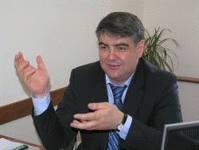 Chairman of the Republican Committee on Tourism, Oleg Karsanov stated that the Committee has developed a plan to build on the route to the summit of Kazbek on the northwestern slope of the glacier Mayli three mountain huts: at elevations 2,300 m, 3450 m, 4149 m.
Chairman of the Republican Committee on Tourism, Oleg Karsanov stated that the Committee has developed a plan to build on the route to the summit of Kazbek on the northwestern slope of the glacier Mayli three mountain huts: at elevations 2,300 m, 3450 m, 4149 m.
The highway to the village Tmenikau will be reconstructed and extended further up to the level of 1950 m (sandy river of Genaldon). Wide footpath will be laid to the upper hot Karmadon springs (2300m), where it will be built a largest hut. In this area there are great opportunities for trekking and easy climbing. Except in the Kazbek district has a number of beautiful mountains: Dzhimarai-Hoch, Miley-Hoch, Shaukudza, Dzarasova Peak (Peak Polyakov), Pastukhova Peak, Peak Surveyor.
A traditional route to Kazbek from Russian (Ossetian) side
Genaldon Valley
Karmadon hot springs
To the summit of Kazbek
What happened to the hut on the saddle of Elbrus?
Elbrus.
Construction of rescue hut on the saddle of Elbrus carried out almost three years. Mountaineering Federation of Russia supported an initiative of some climbers, there were found money and volunteers for the work. Grand opening of the hut ...
Construction of rescue hut on the saddle of Elbrus carried out almost three years. Mountaineering Federation of Russia supported an initiative of some climbers, there were found money and volunteers for the work. Grand opening of the hut was on Sept. 1 2010, at an altitude of 5,300 meters. In September, Alexander Abramov, lead a group climbing Elbrus, had organized rescue work for a Polish climber. Hard to say, could this be done without the hut.
However, in late October, guide Eugene Kruten, climbing on Mount Elbrus, found that the refuge is destroyed. Upper part of hut is separated from the base and lying quite near but aside. This fact has caused surprise and intense discussion of what happened. In principle, the general conclusion is: it must be restored. Reason of destroying: changes in design, connected with the loss of some details during winter storage. Wind on the saddle has hurricane strength, quite often. We need more precise engineering calculation.
Two photos from Eugene Kruten
Rescue work at the hut
1th September, opening
Photos and videos of the expedition to Carstensz
Carstensz Pyramid.
Ludmila Korobeshko flew yesterday from other parts of the world, which stuck to a large part somewhere in the stone age. Lots of impressions, which, alas, she will not have time to present as text. Fortunately, the camera worked fine, ...
Ludmila Korobeshko flew yesterday from other parts of the world, which stuck to a large part somewhere in the stone age. Lots of impressions, which, alas, she will not have time to present as text. Fortunately, the camera worked fine, despite the complete lack of recharge, at a constant 100% humidity at the beginning of the path and cold, in the end. We can not publish all the pictures and all video, tried to select the most interesting and posted on our site...
FULL GALLERY >>>>>>>>>>>>>>>>>>>>>>>
VIDEO
